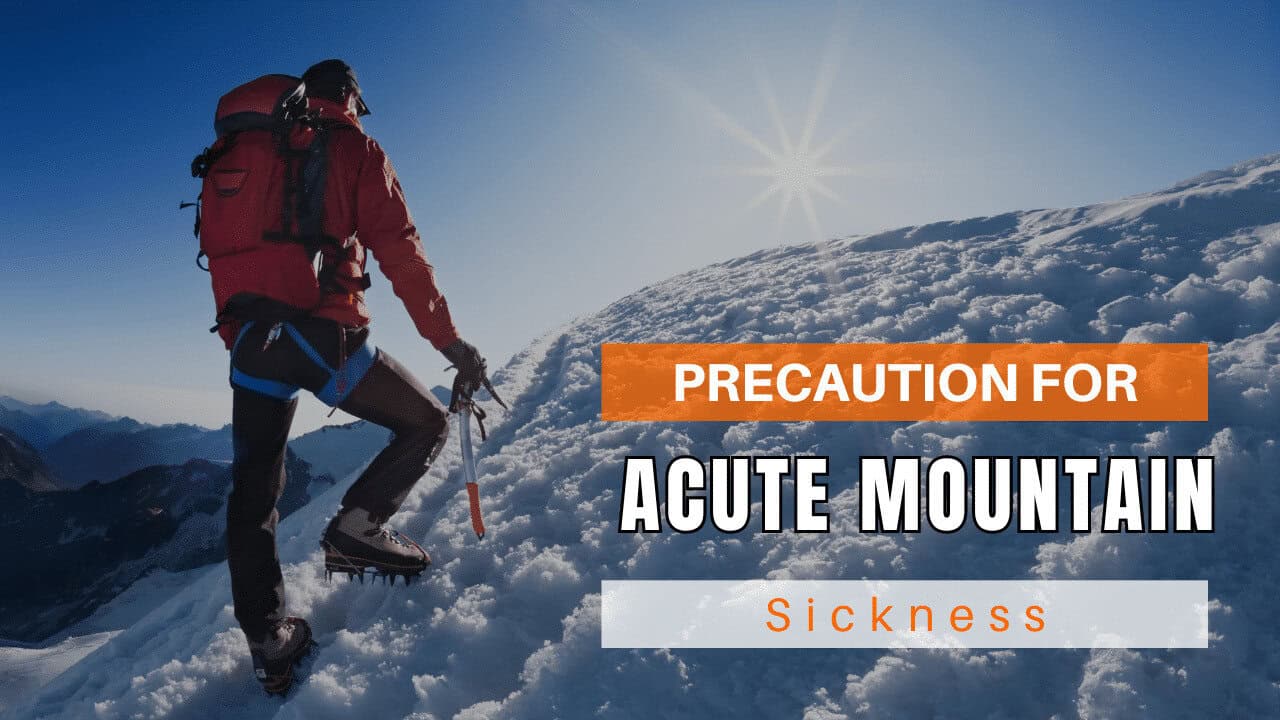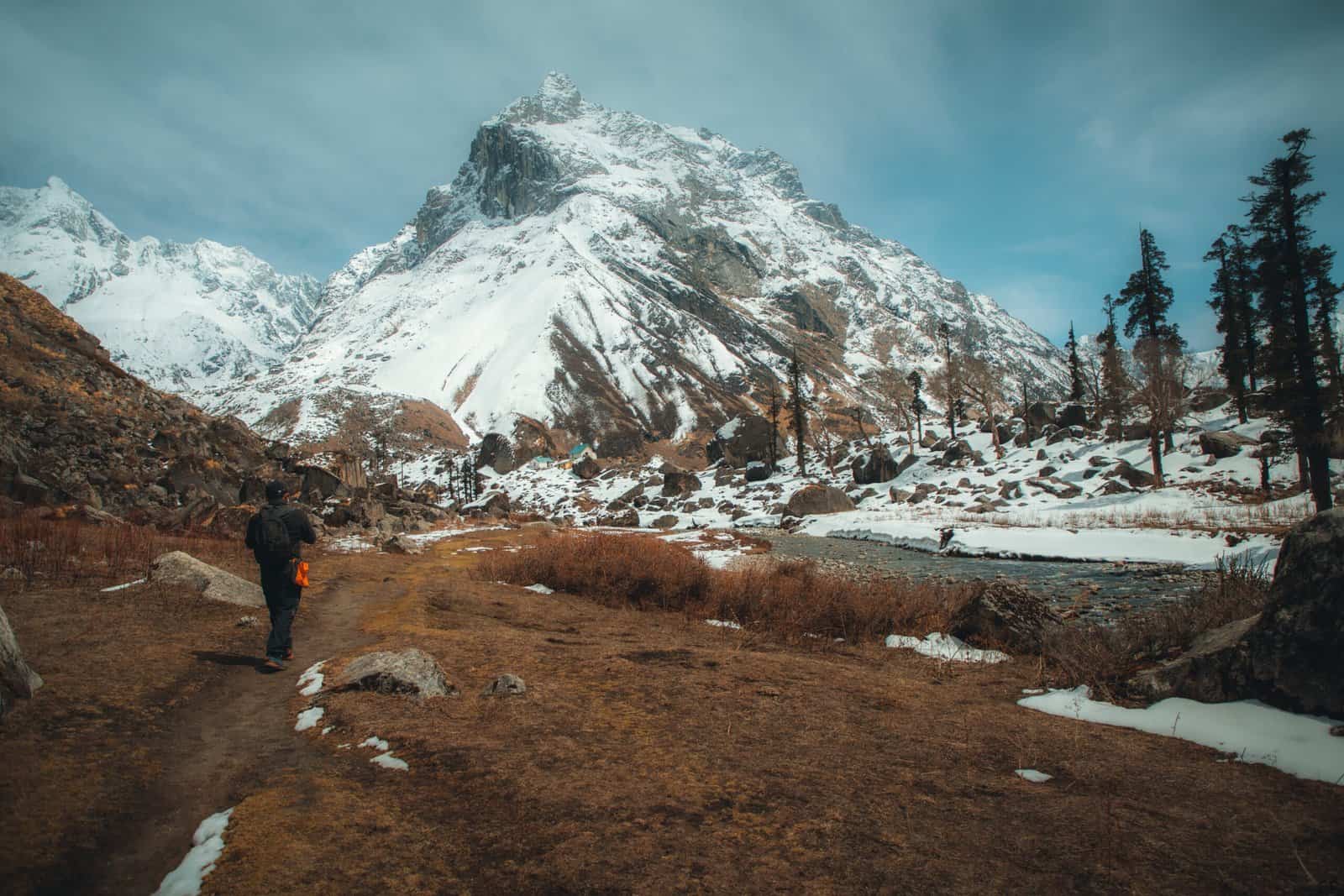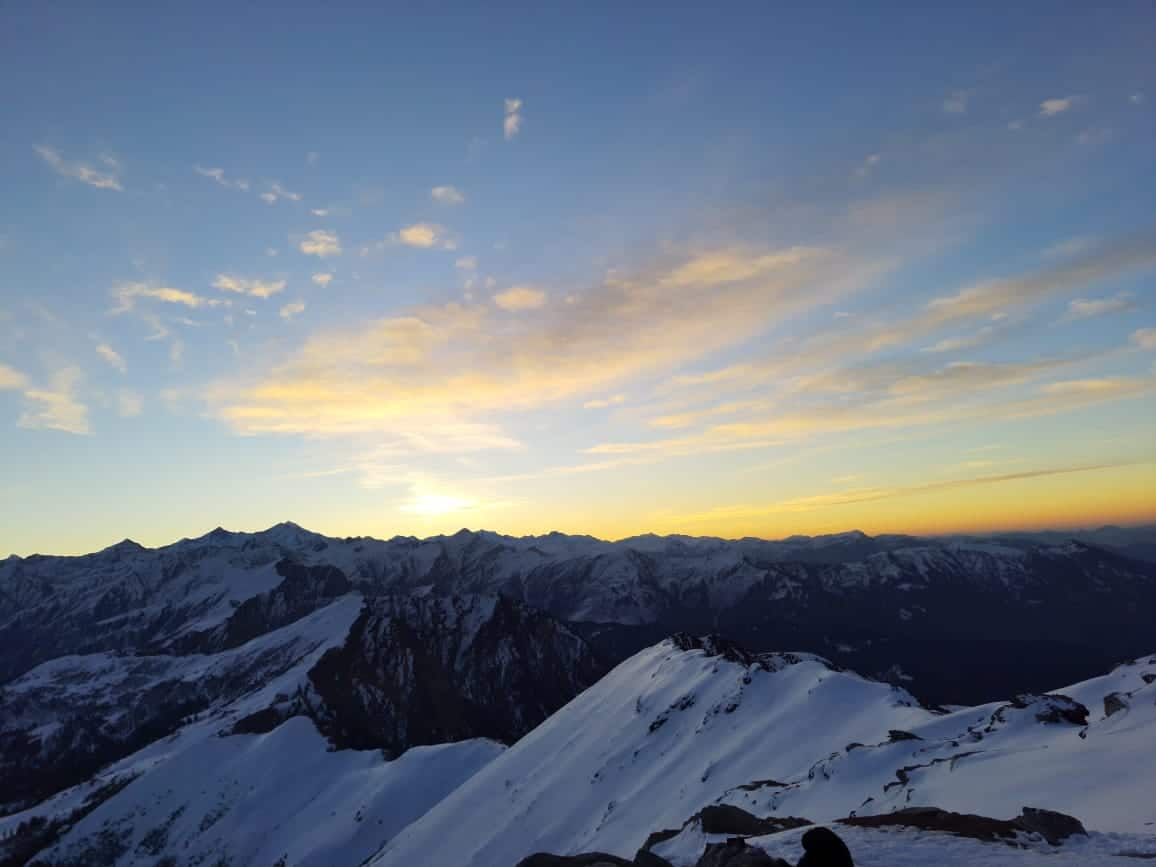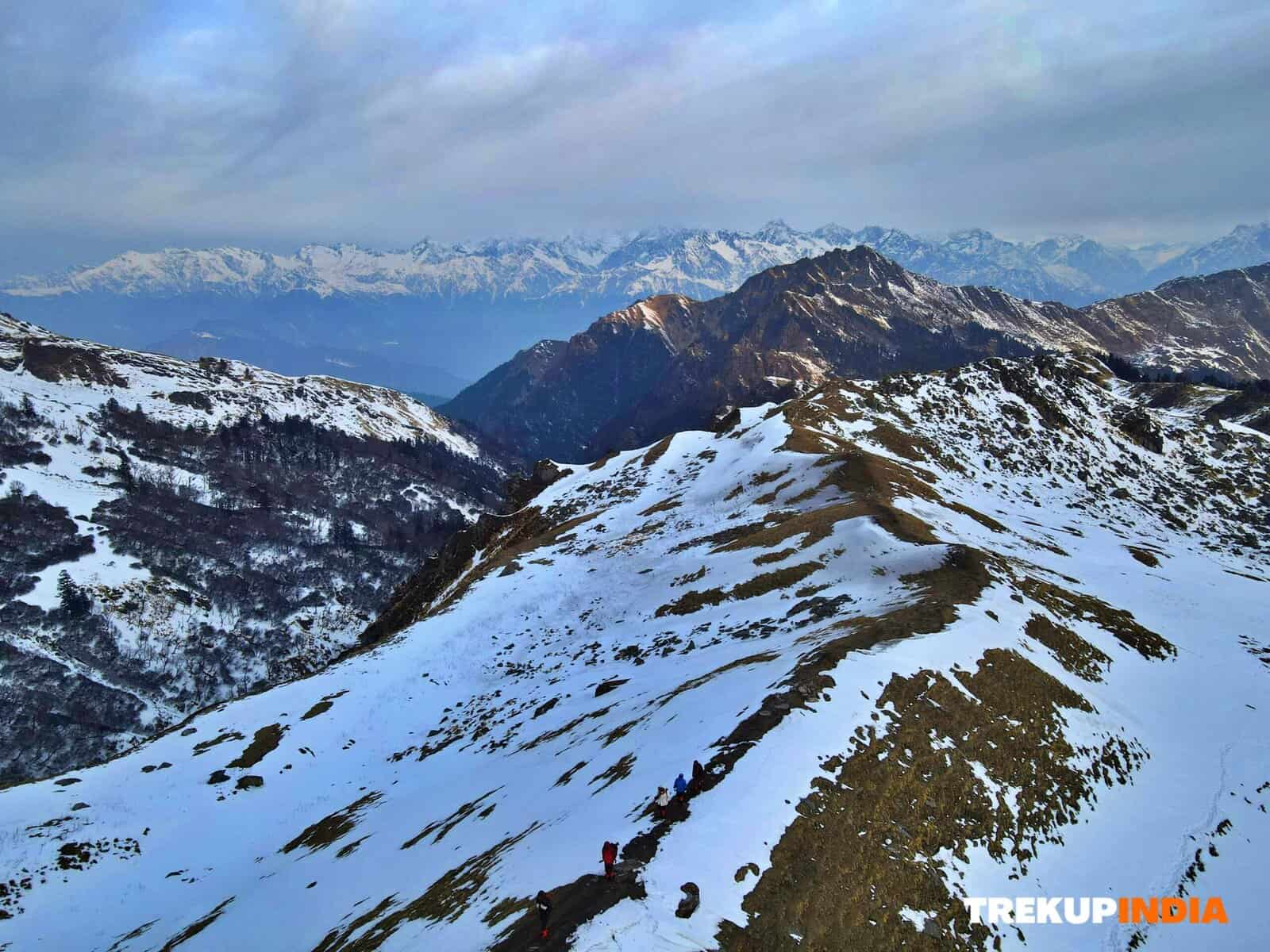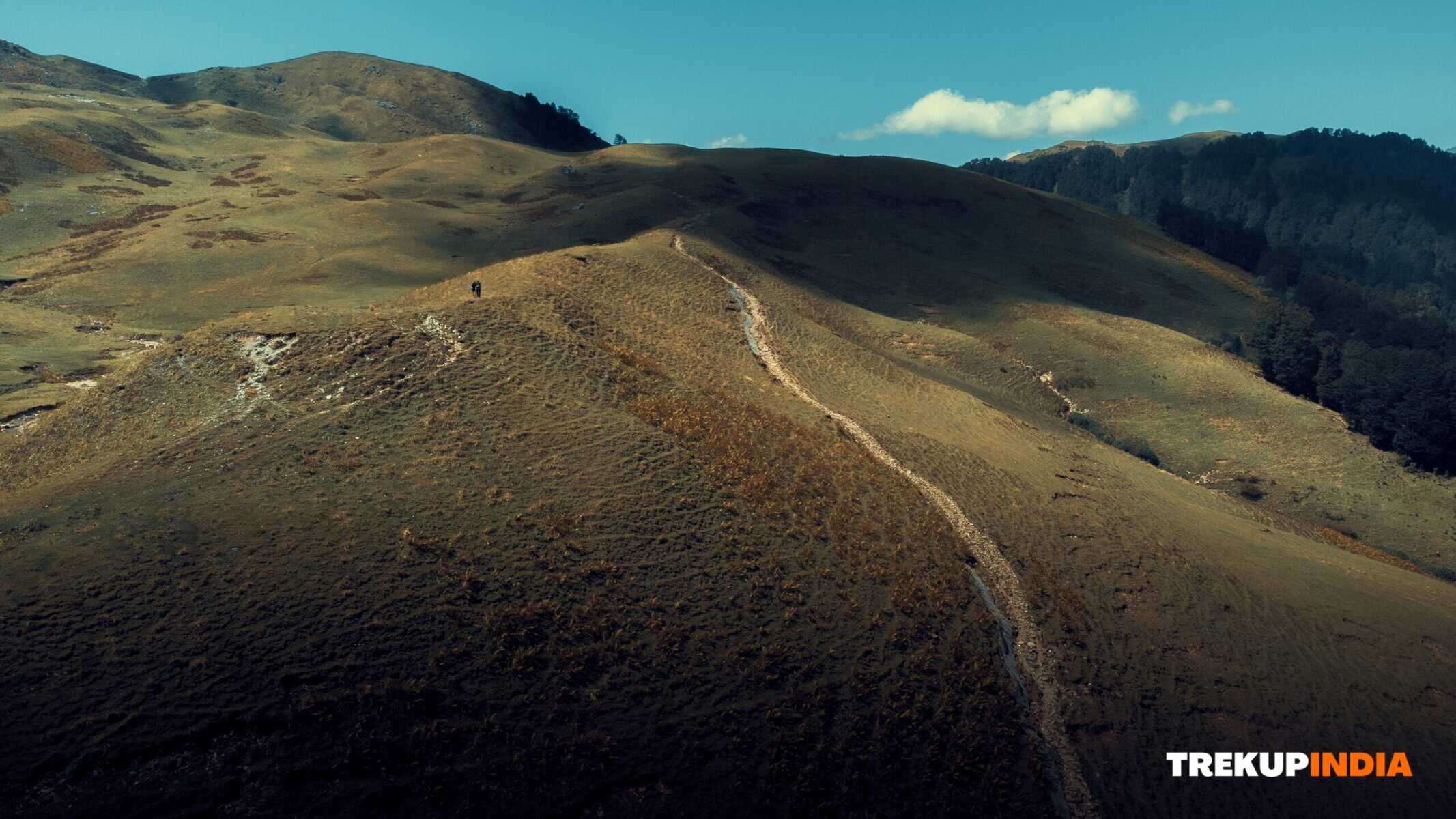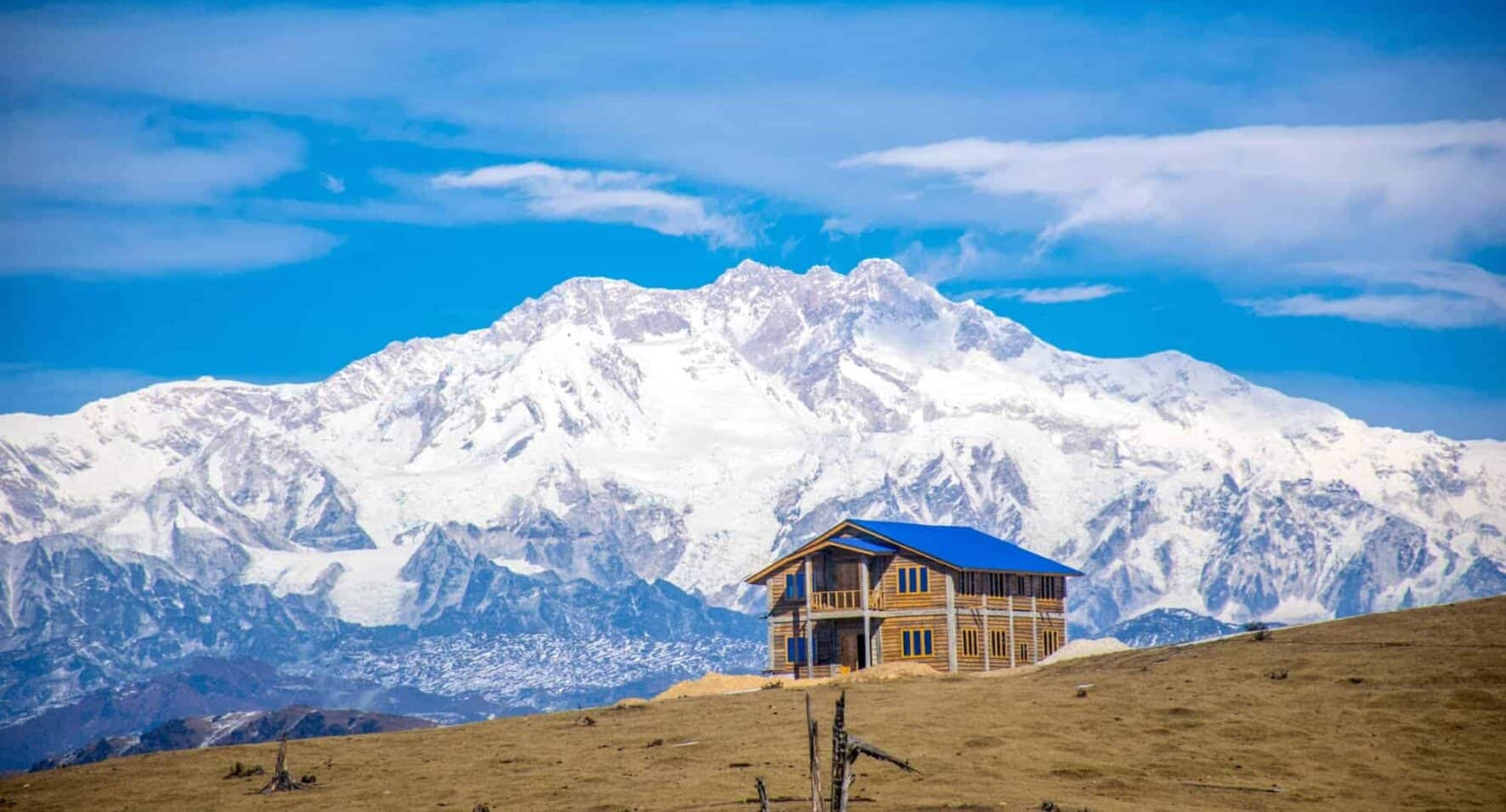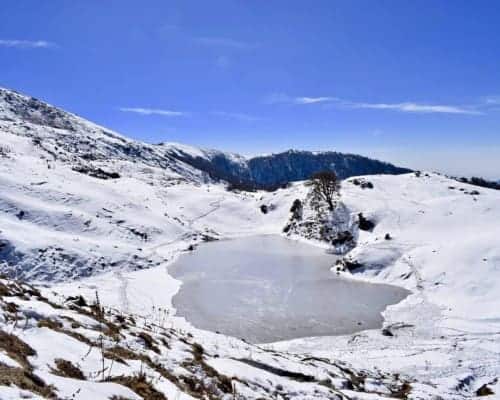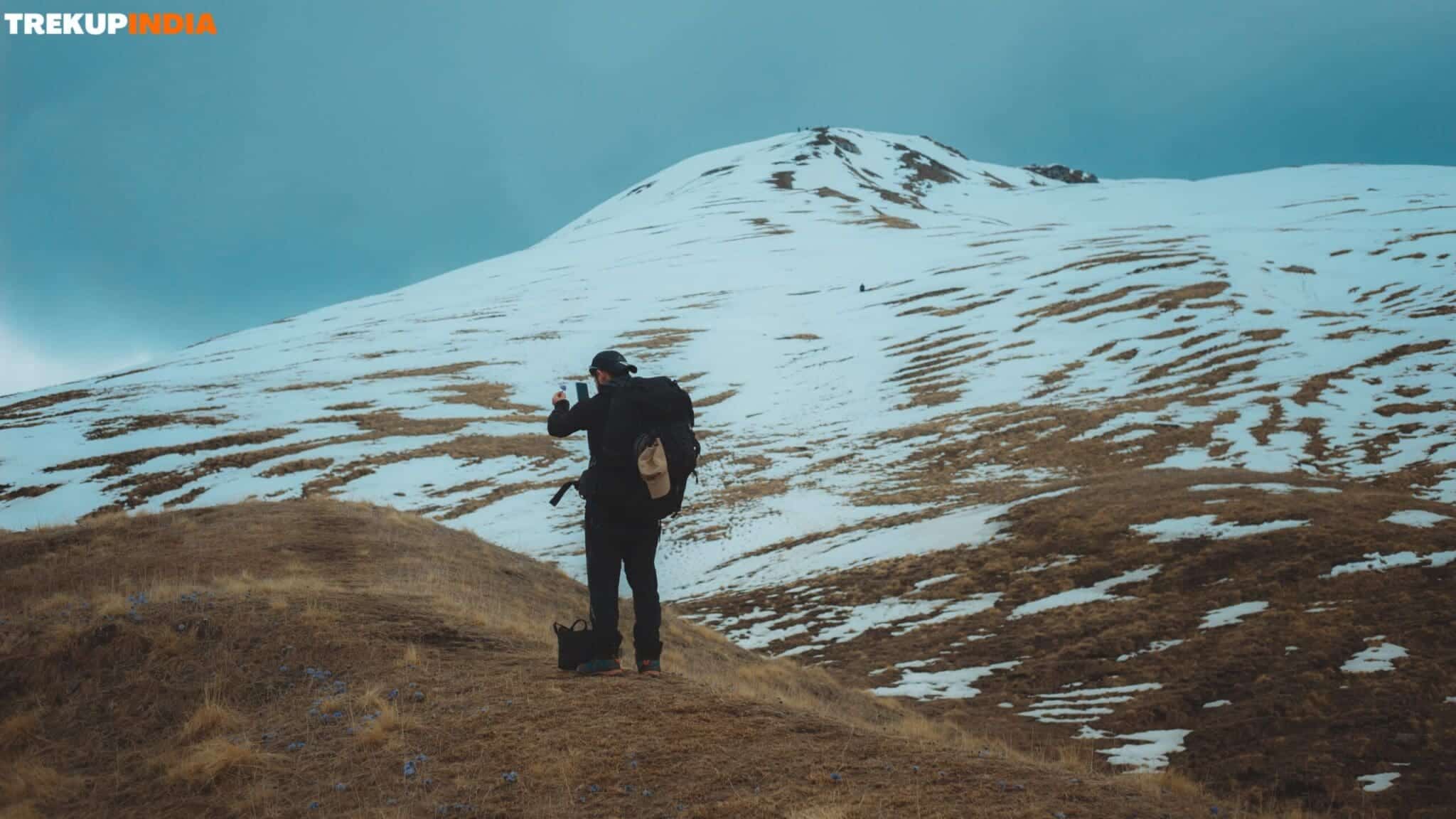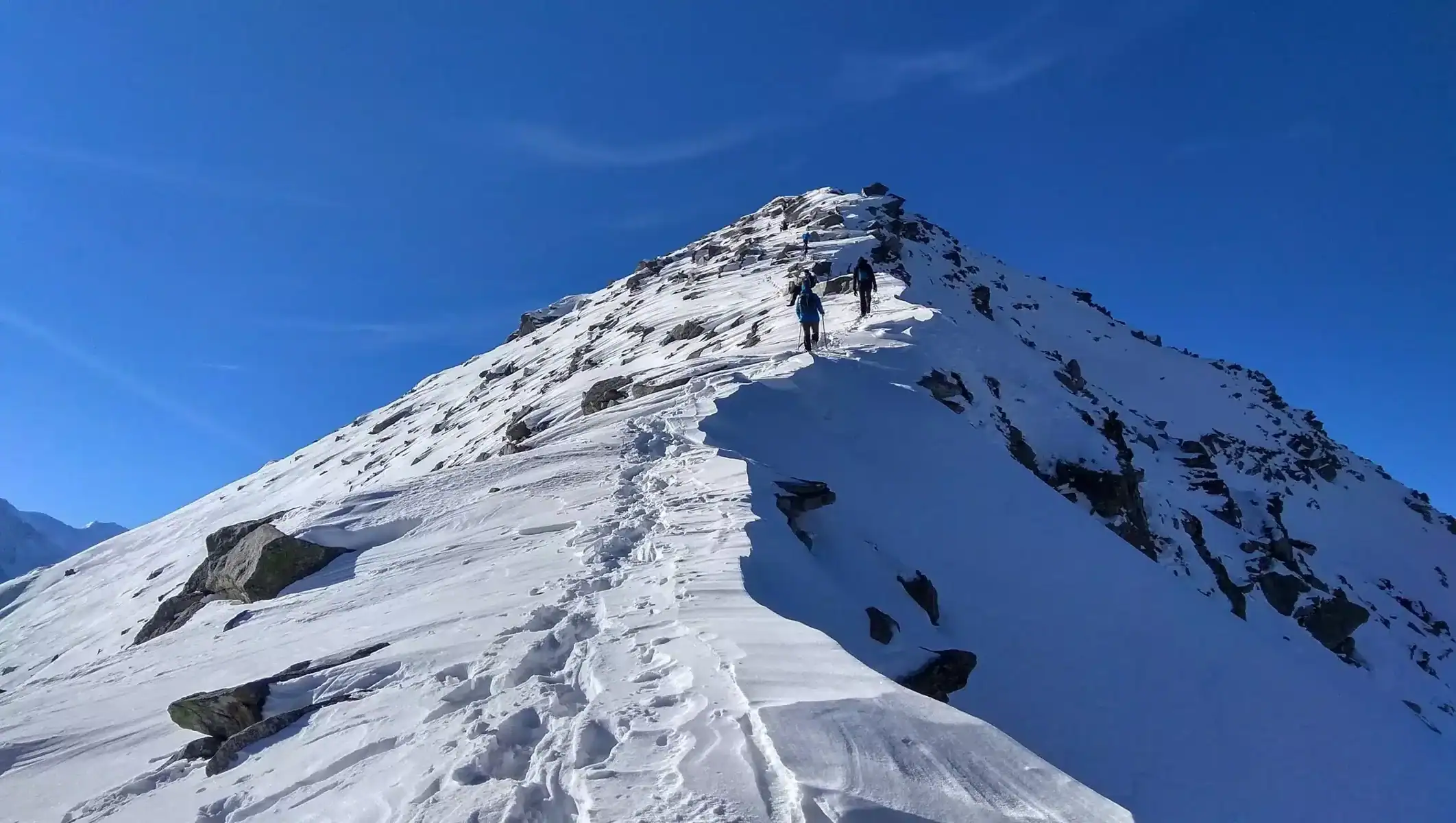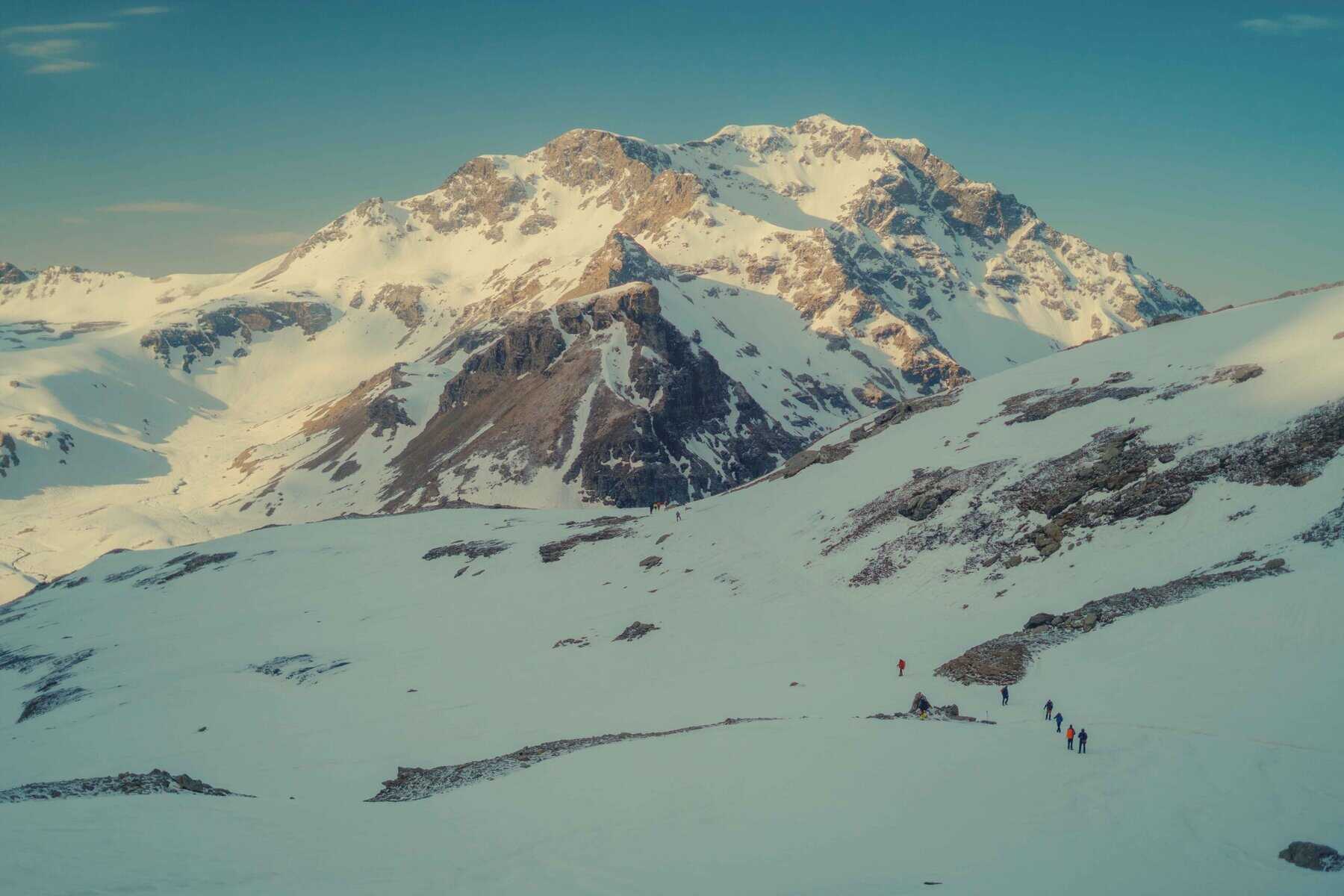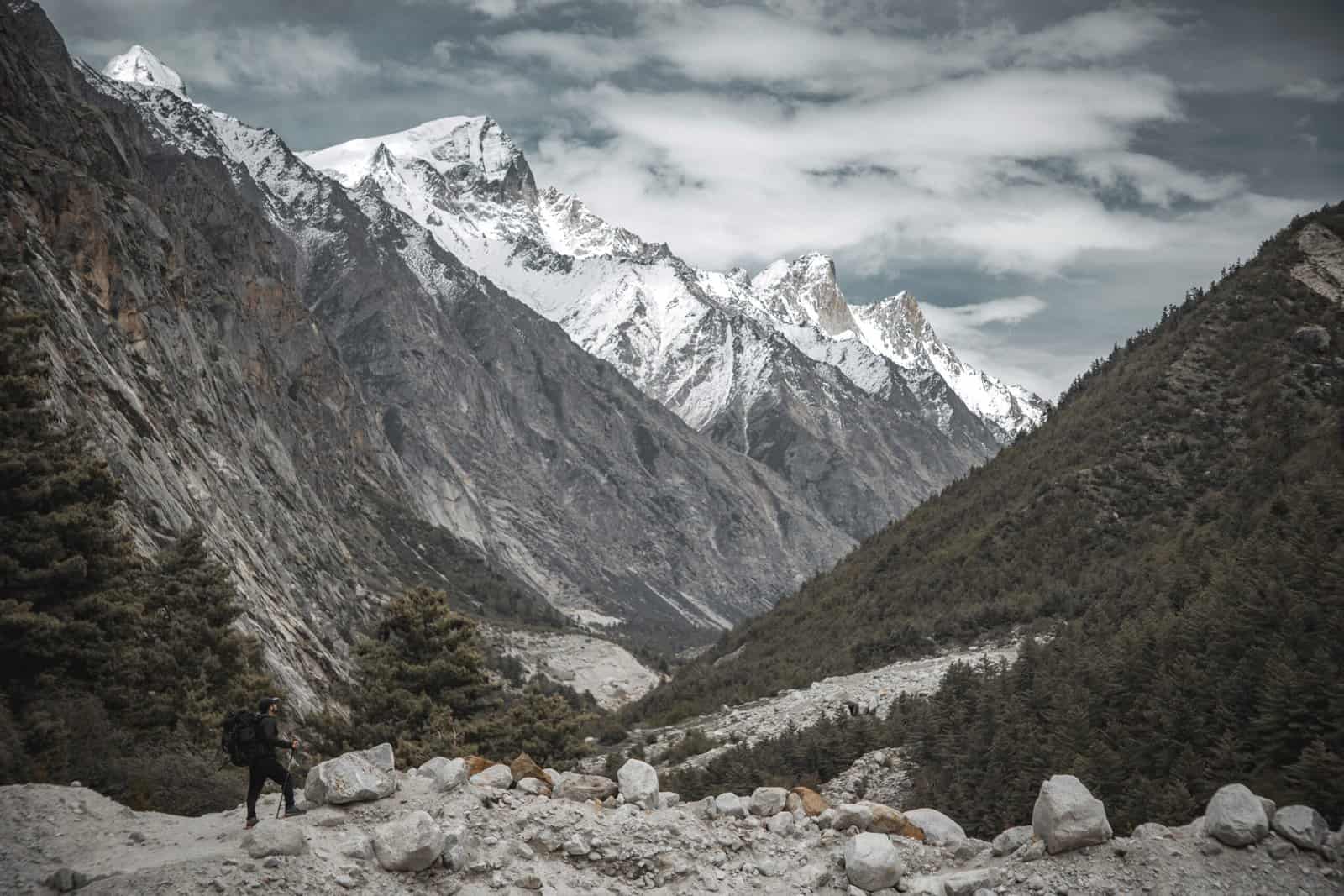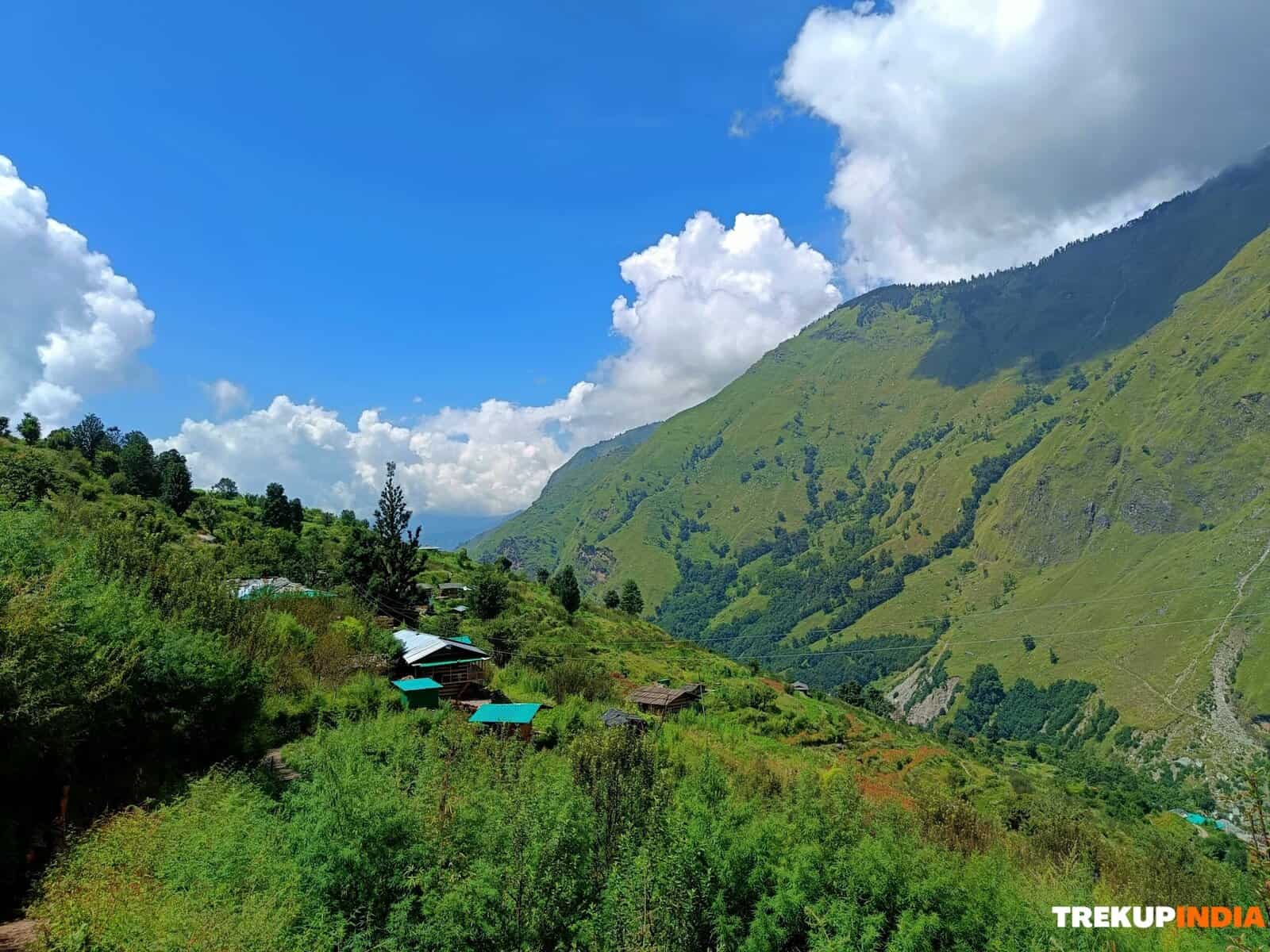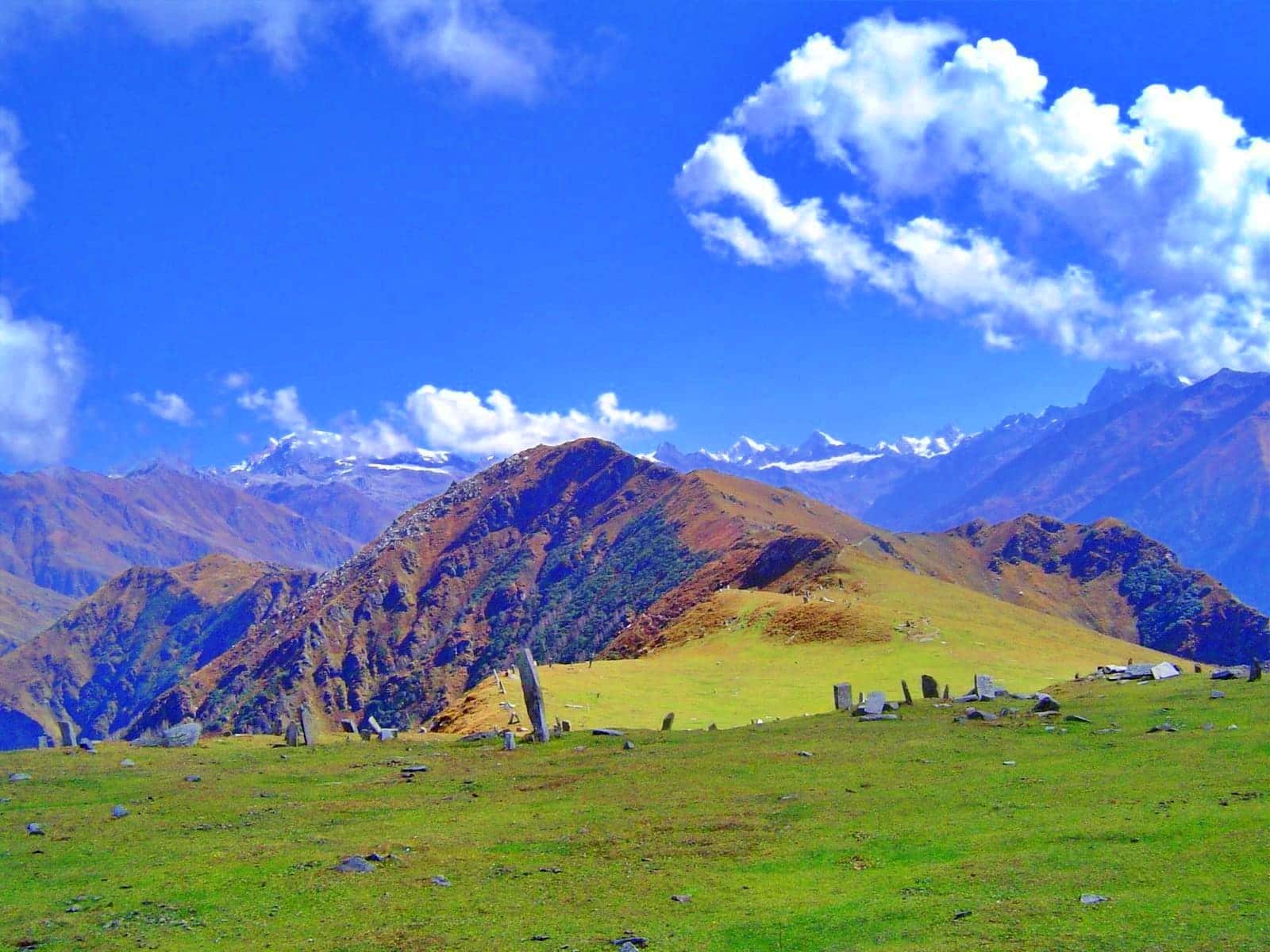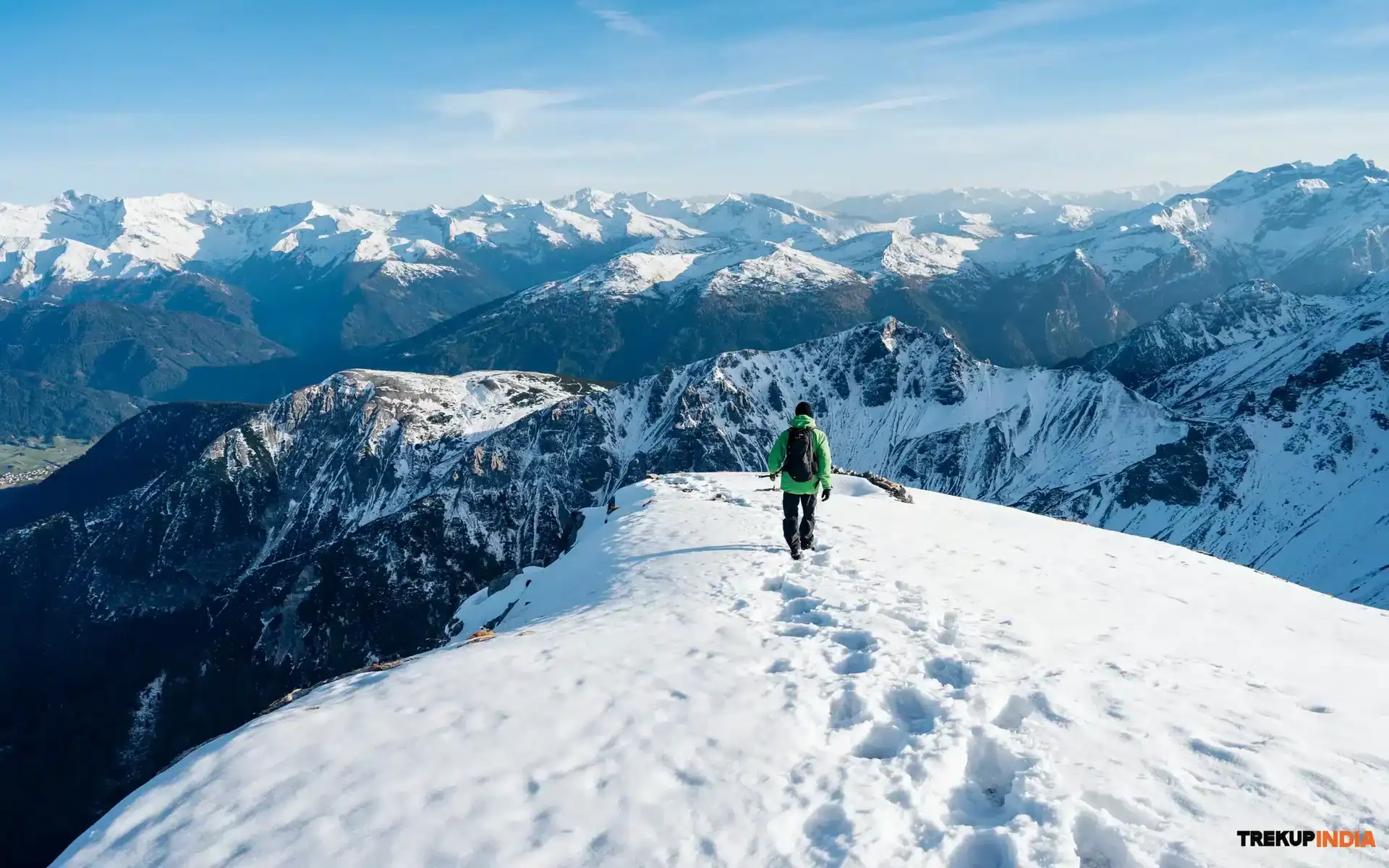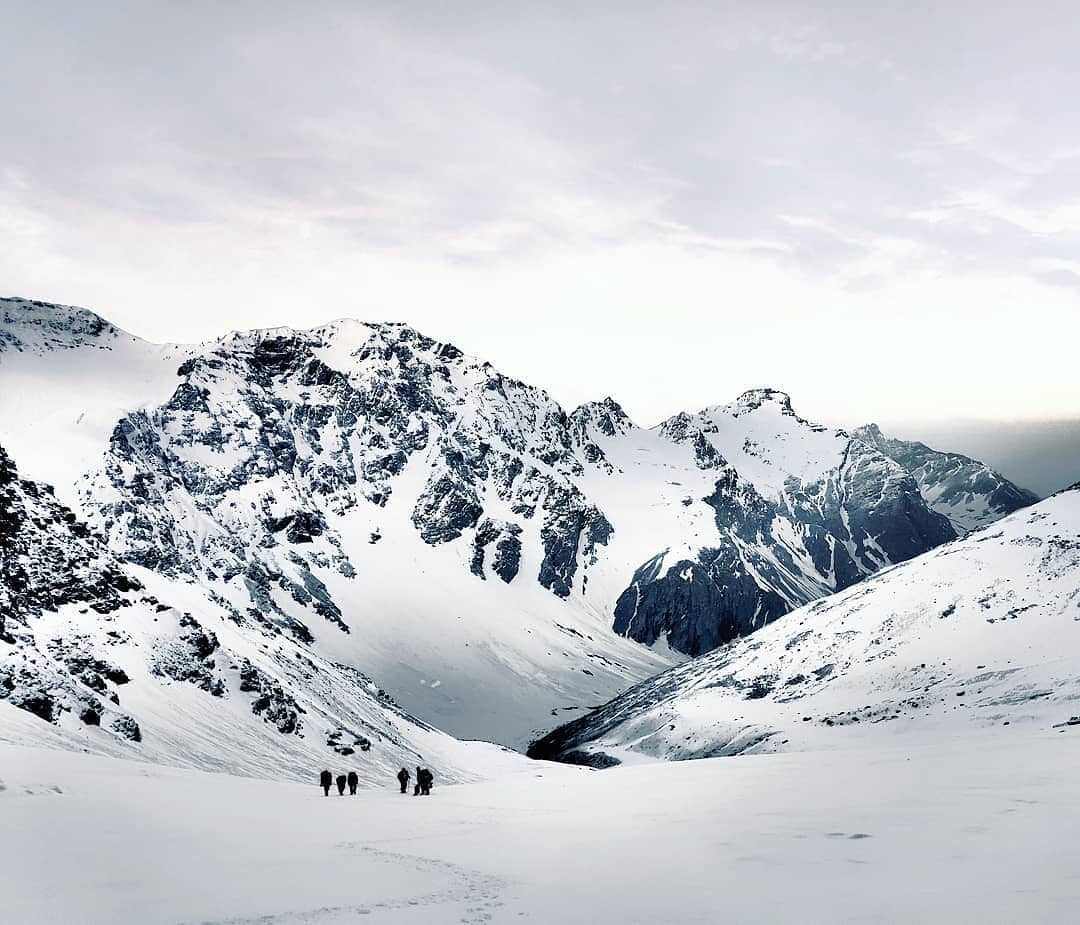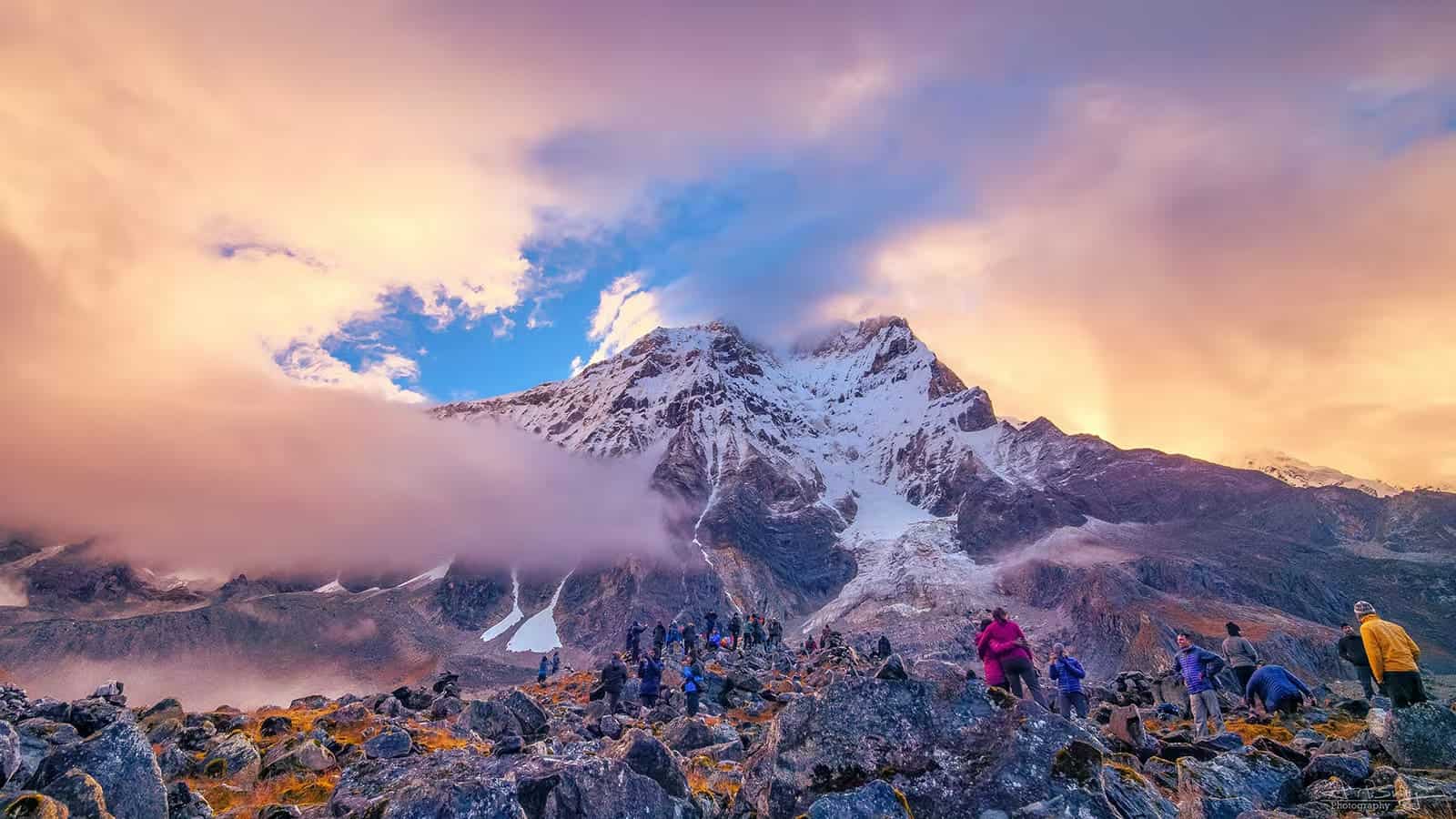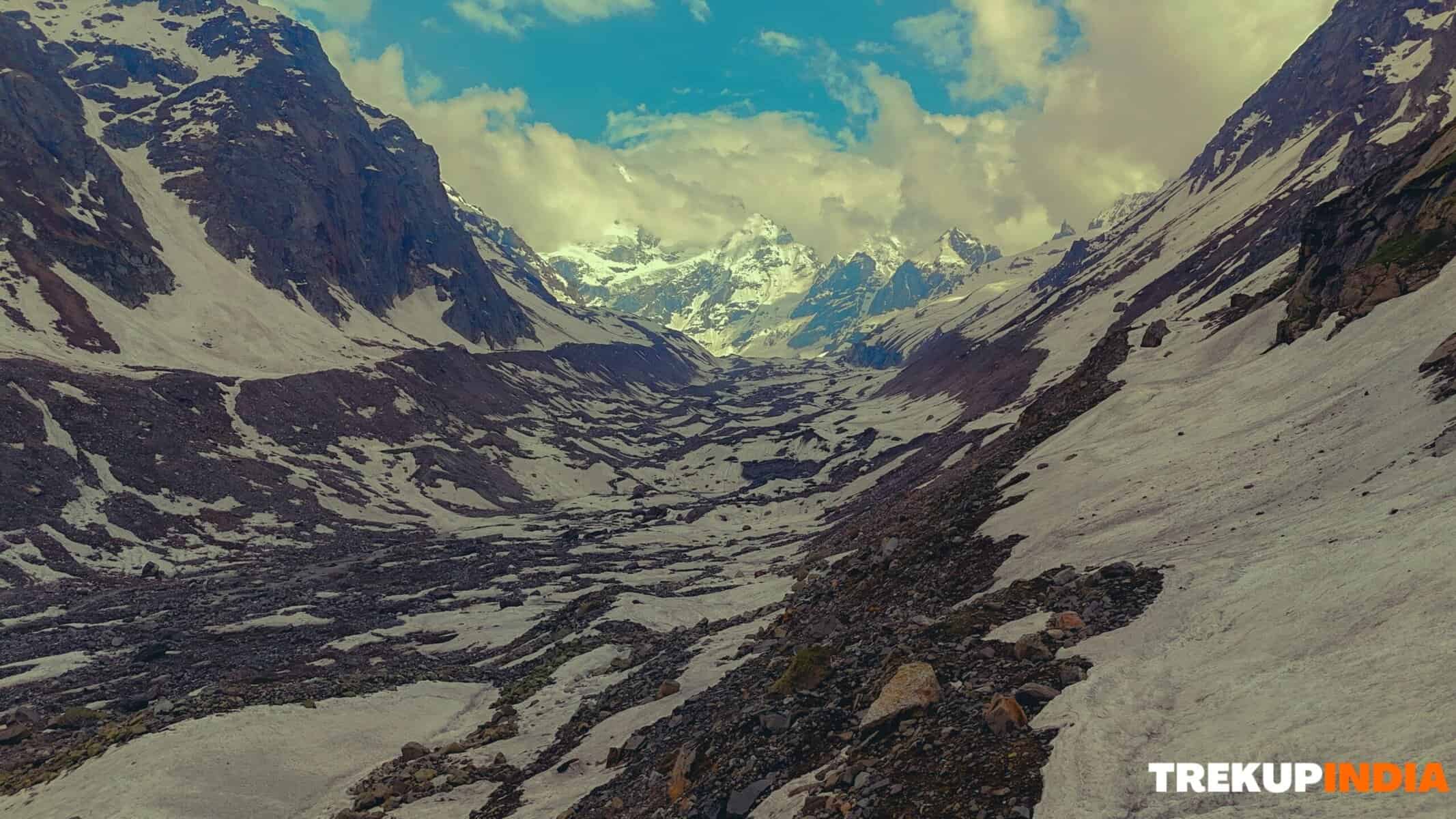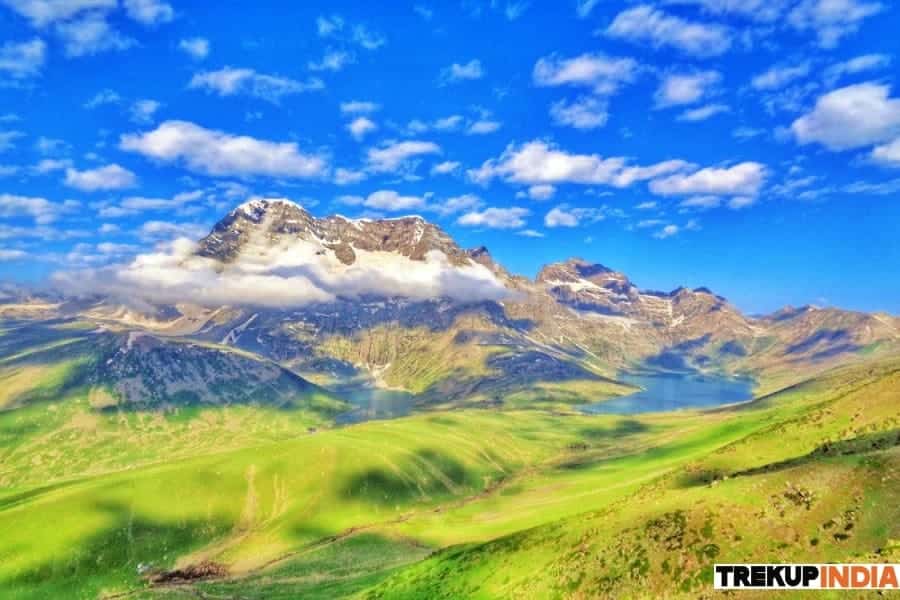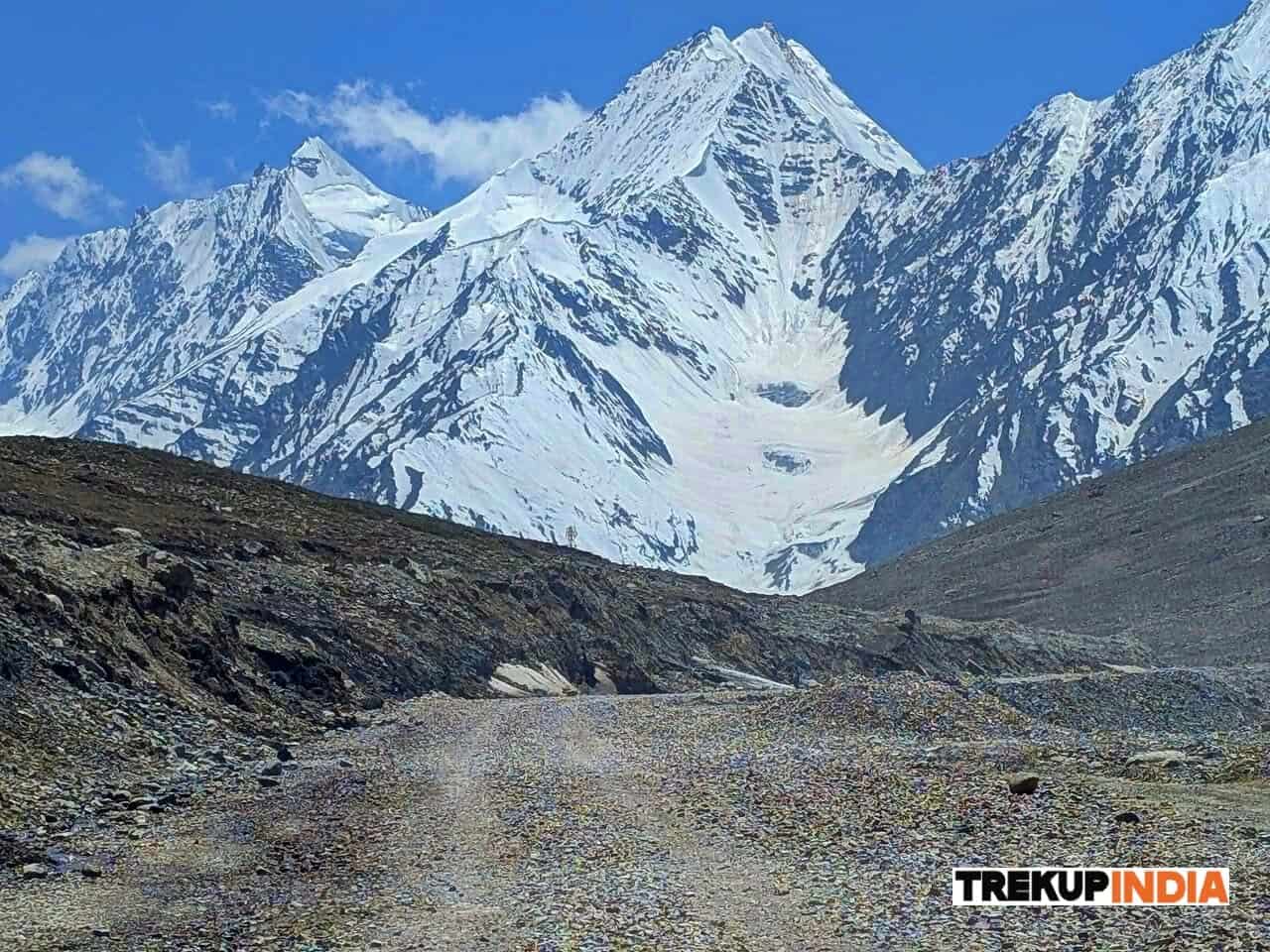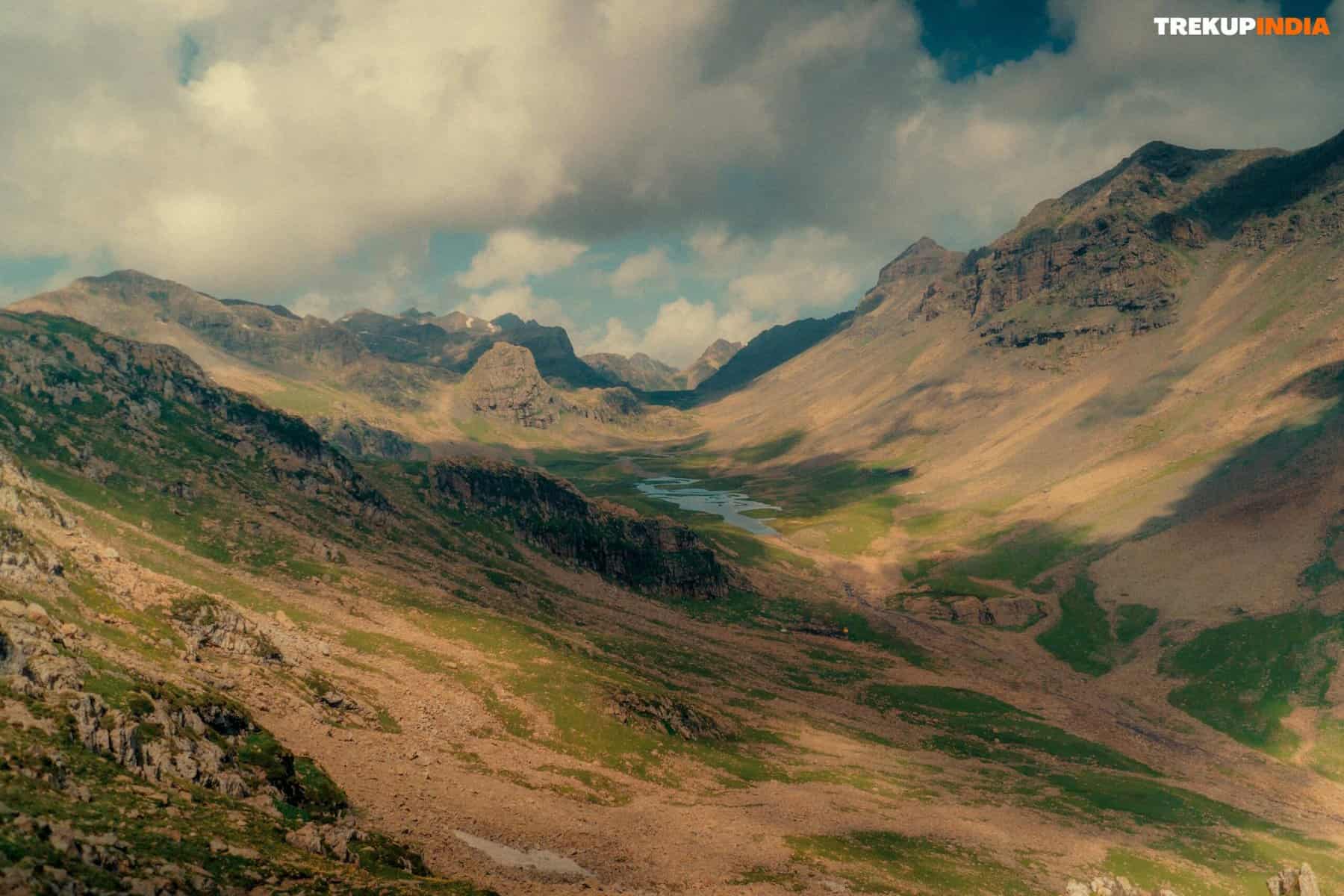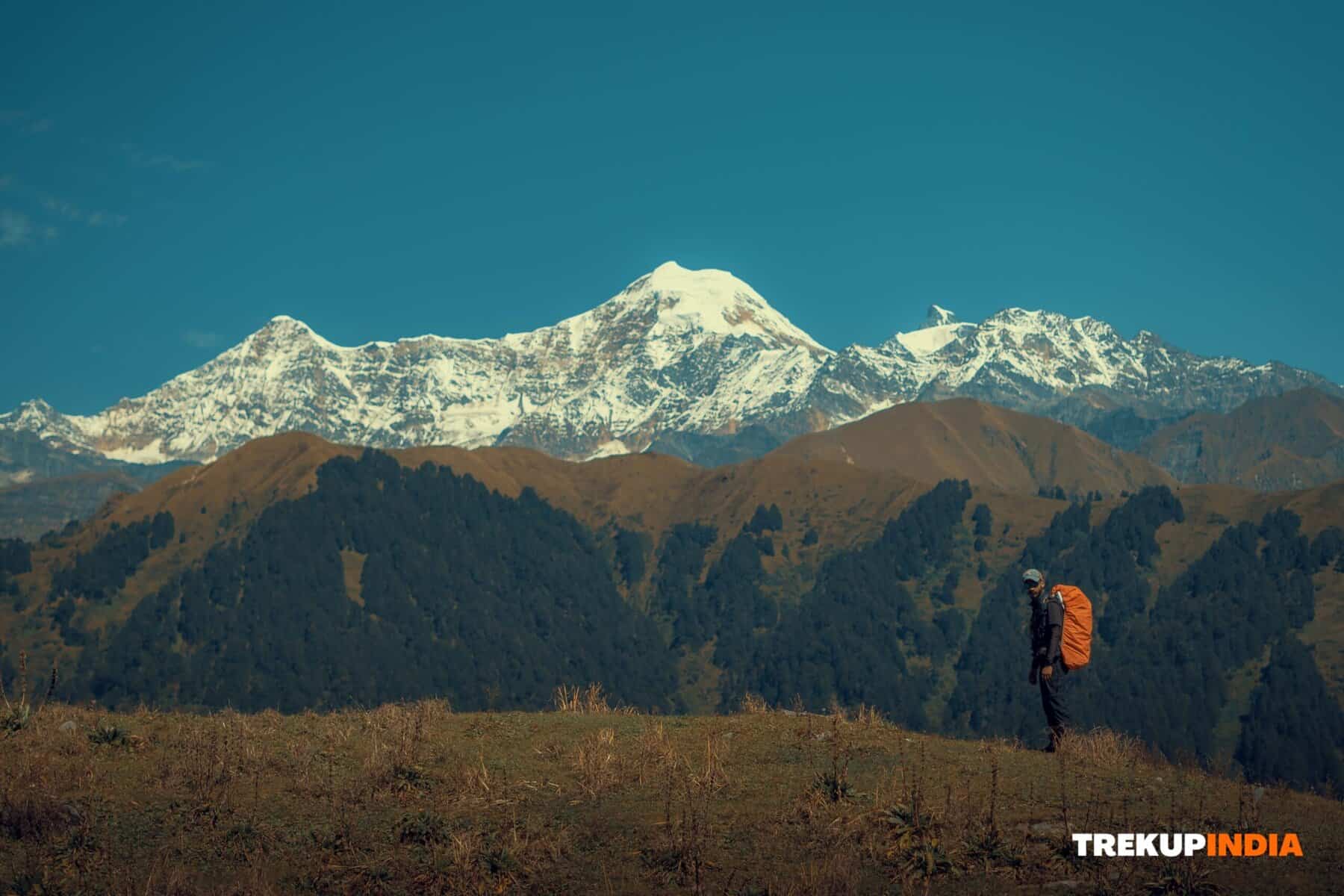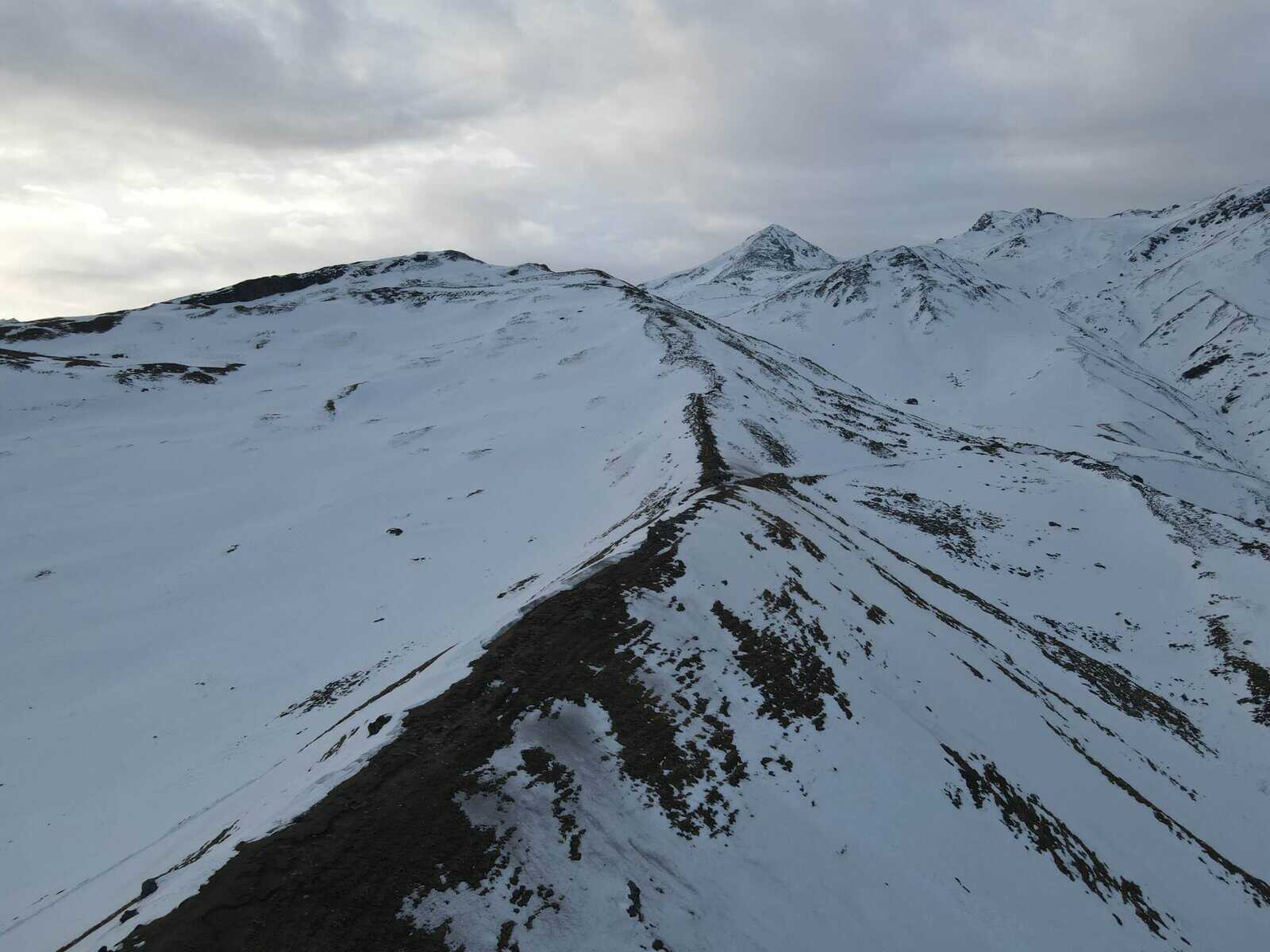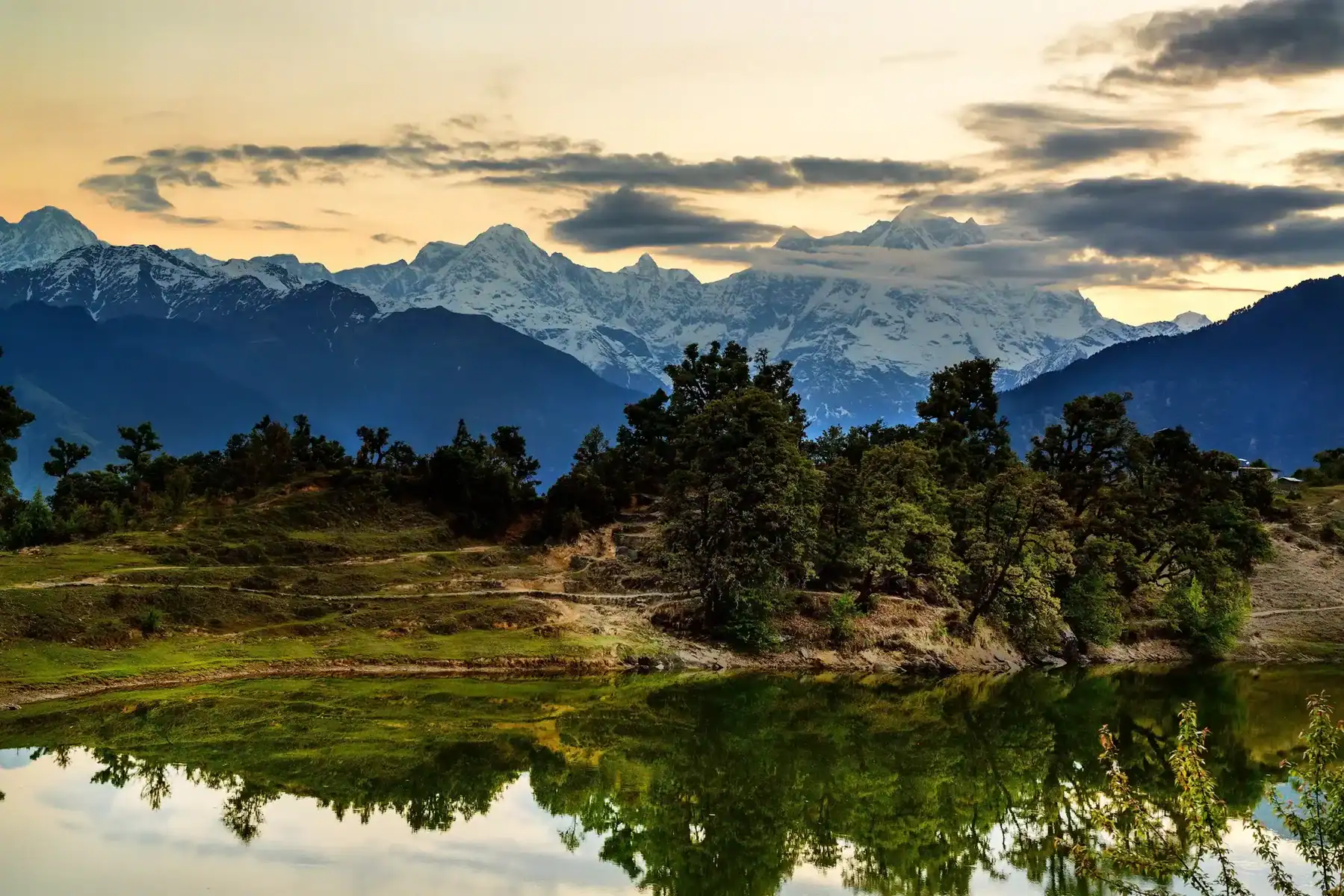How To Choose The Best Trekking Shoes
When choosing the best snow trekking shoes, it’s crucial to select a pair that meets your specific needs. There are many different types of snowshoes available, each designed for particular conditions. To make the best choice, you’ll need to consider the type of terrain you’ll be trekking over. For example, tight-weave snowshoes provide better insulation than those with a loose weave, but the grip of the shoe is equally important for stability on snow and ice.
A good pair of snow trekking shoes should feature the following key attributes:
Spacious Toe Box: Ensure the shoes have a wide enough toe box so your toes aren’t cramped. When the laces are tightened, there should be no contact between your toes and the sides of the shoe.
Heel Elevation: A slightly elevated heel helps with comfort and gives you better foot positioning while trekking, reducing strain on your legs.
Crampon Compatibility: Look for shoes that are compatible with crampons. Most hiking boots come with this feature, allowing you to securely attach crampons when needed for icy or challenging terrain.
Sizing and Fit:
When trying on trekking shoes, wear the socks you’ll use during your hike. Some shoes may be too wide, while others may feel too tight or uncomfortable. Keep in mind that foot structure can differ between men and women, and a shoe with a narrower fit may offer more comfort and reduce the chance of blisters. Experiment with different lacing techniques to relieve pressure in specific areas of your foot, ensuring a snug fit without causing discomfort.
Trial and Error:
If you’re uncertain about which shoes to choose, try on several different pairs. Finding the right pair of snow trekking shoes can be a trial-and-error process, but with these tips, you’ll be able to select the most comfortable and suitable footwear for your adventure. Take the time to make an informed decision, and you’ll ensure that your feet stay comfortable, protected, and blister-free during your trek.
Trek Shoes Sole And Grip
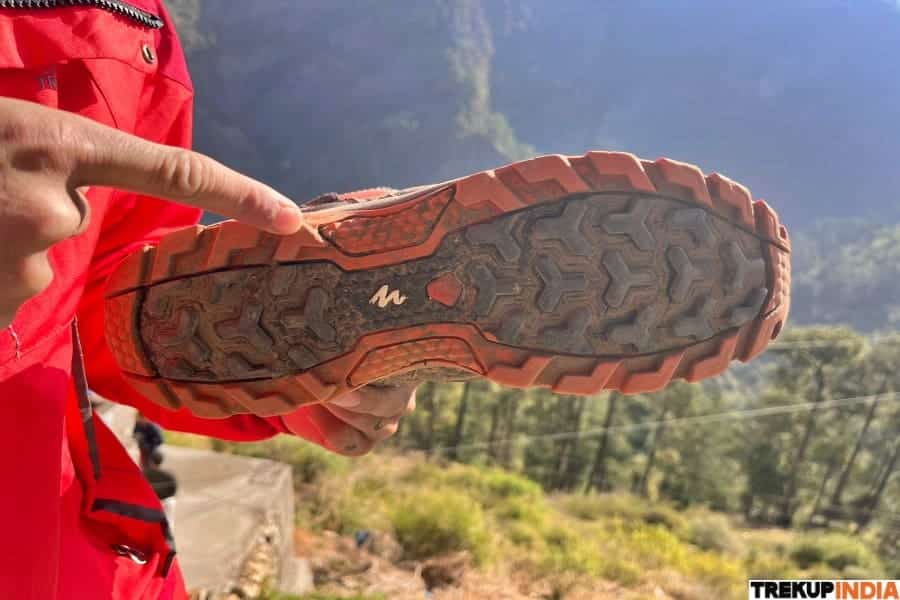
Another critical factor to consider when purchasing snow trekking boots is the sole. The sole of the boot is integral to providing stability, traction, and protection for your feet. It is important to choose a material that can shield your feet from the cold while ensuring durability on the terrain.
Material of the Sole:
The most common materials used for snowshoe soles are EVA (Ethylene Vinyl Acetate) or polyurethane. These materials offer durability and cushioning, which is essential for long treks. Additionally, the lug pattern on the sole determines the traction. A sole with deep, well-defined lugs will provide superior grip on snow and icy surfaces, preventing slips and falls. The deeper the lugs, the better the grip.
Cushioning and Rigidity:
A solid sole is crucial for maintaining foot safety on extended hikes. It ensures that your feet are well-supported, providing both rigidity for stability and cushioning to absorb shock over rough, uneven ground. A robust sole offers greater protection and comfort, especially during long treks, by preventing your feet from direct contact with cold, hard surfaces. On the other hand, a more flexible sole might offer less cushioning but can be more comfortable for shorter distances or more stable terrain.
Traction on Slippery Surfaces:
Traction is paramount when trekking in snowy or icy conditions. A more durable and rigid sole with a deep tread pattern ensures you have the grip you need to safely navigate slippery surfaces. The ability to maintain solid footing on uneven terrain is one of the most important features for snow trekking boots, so make sure the sole is designed to handle such conditions.
Comfort and Protection:
While style is important, it’s essential not to compromise on comfort and safety. When selecting snow trekking boots, ensure they are designed for long-distance treks and offer a comfortable fit with enough room for your feet to breathe but without excess movement. A shoe that is both durable and comfortable, with deep tread and reliable cushioning, will prevent foot injuries and fatigue during extended outdoor adventures.
By focusing on the sole’s materials, design, and function, you’ll ensure that your snow trekking boots provide both comfort and protection throughout your journey.
Weight
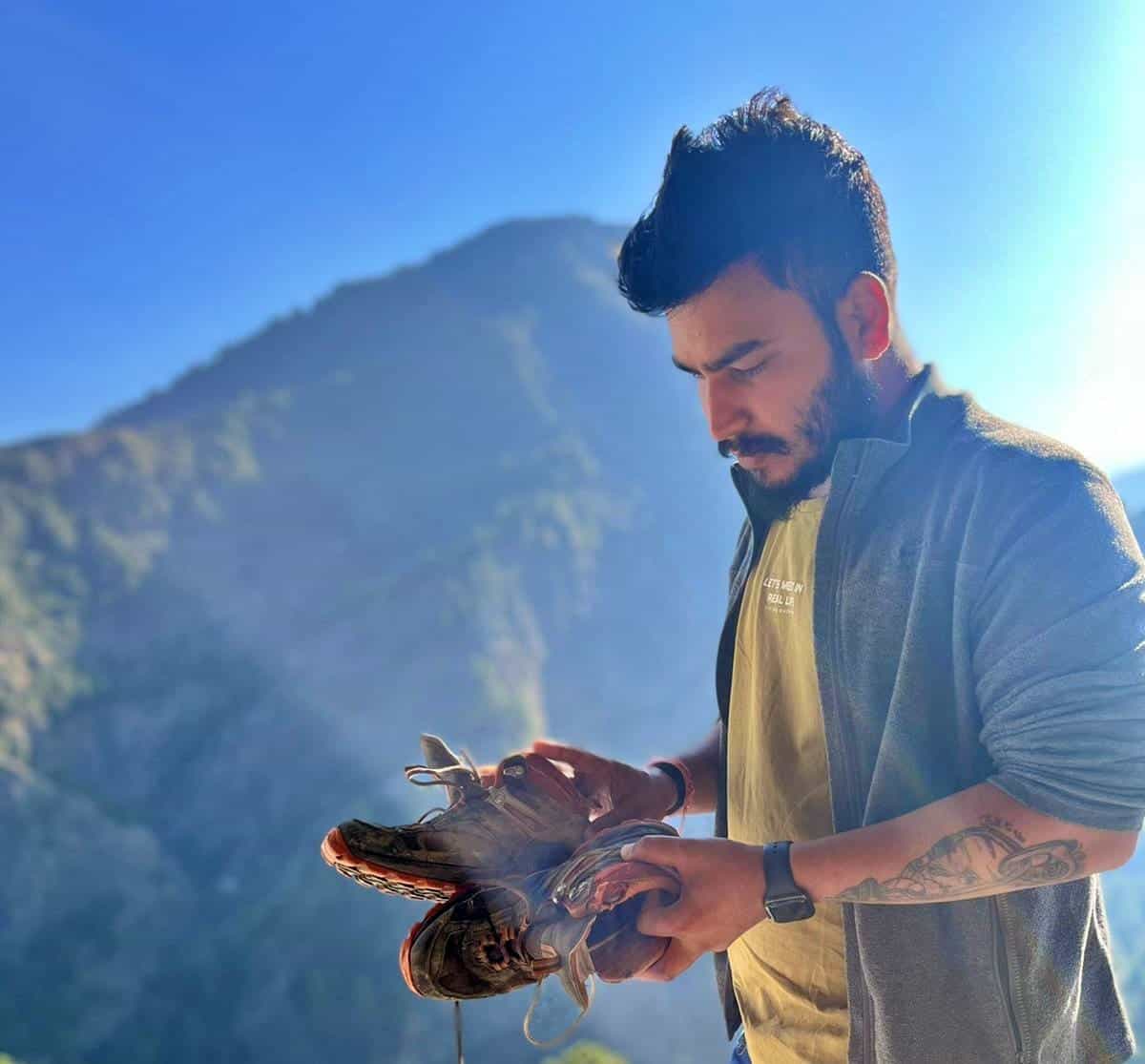
The weight of your trekking footwear is one of the most crucial aspects to consider when selecting boots for snow trekking. The weight of the boots can significantly impact your comfort, energy levels, and overall trekking experience. Lighter boots reduce fatigue and make long-distance trekking more manageable. However, lighter footwear may sometimes sacrifice support or insulation, so it’s essential to strike a balance.
Stability and Support:
While the weight is important, stability and support are also critical factors. The shoes should provide sufficient ankle support, especially when trekking over uneven or rough terrain. A stable boot can help you maintain your balance and reduce the risk of sprains or injuries on rocky, snowy, or icy ground. Boots that offer good stability and proper support prevent your feet from moving inside the shoe, reducing the risk of blisters or discomfort.
Size and Fit:
Ensure the boots fit properly and leave enough room for your socks and toes. An ill-fitting boot can cause blisters or discomfort on long treks, and an overly tight shoe may restrict circulation, leading to cold feet. It’s important to try on boots with the socks you plan to wear during your trek to ensure the fit is appropriate for both comfort and functionality. A proper fit will also improve the shoe’s support, making it easier to navigate through tough terrain.
Comfort:
Finally, comfort is paramount. Even the most durable and supportive boots won’t perform well if they’re uncomfortable. When selecting trekking footwear, make sure the shoe feels right on your feet. It should have adequate cushioning and a secure fit without being too tight or too loose. If you’re hiking in snowy or cold conditions, also ensure that the boots provide enough insulation to keep your feet warm and dry throughout the trek.
In summary, when selecting trekking footwear, balance the weight, stability, and comfort, while ensuring the boots fit properly. By doing so, you will enhance your trekking experience and ensure that you can comfortably handle the demands of the terrain.
Ankel Support Of Trekking Shoes
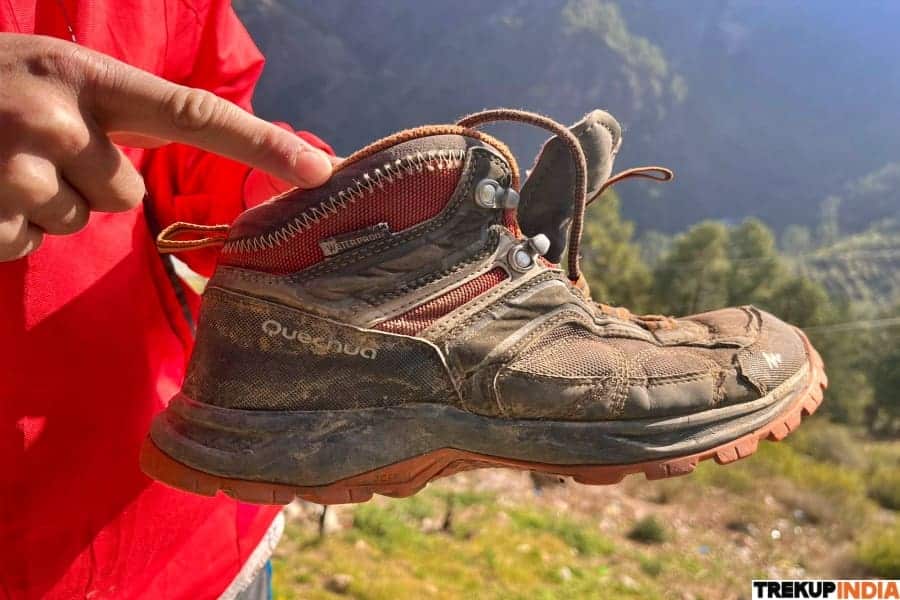
Ankle Stability is one of the most critical features of high-quality hiking footwear. Proper ankle support helps prevent injuries, particularly on uneven or slippery terrain. When trekking, your ankles are subjected to various forces, including the pressure of uneven ground, rocks, and snow. A strong, supportive boot can significantly reduce the risk of sprains or twists, ensuring your safety on challenging hikes.
A stiff and durable outsole plays a vital role in providing the necessary grip and stability. A solid outsole prevents your foot from sliding, particularly on wet, icy, or rocky surfaces. It also helps absorb shock, reducing the impact on your feet and joints, which is essential for long treks. A well-constructed outsole enhances the responsiveness of your feet, allowing them to adjust to the terrain faster and more effectively.
Ankle Support in hiking boots is crucial because an injury to your ankle can lead to severe consequences, such as falls or an inability to continue your hike. With proper ankle support, your foot is kept in a secure position, reducing the risk of strain or injury. Hiking boots with a higher cuff that wraps around the ankle provide stability and prevent unwanted movement, especially when navigating rocky trails or slippery slopes.
Investing in hiking boots that offer excellent ankle support and a sturdy outsole is essential for ensuring a safe and comfortable trekking experience. Without proper support, you are more vulnerable to injuries that could compromise your hike and overall enjoyment. Therefore, when selecting hiking footwear, prioritize ankle stability, support, and the durability of the outsole for a safer and more secure adventure.
Water Proof / Resistance Is Important
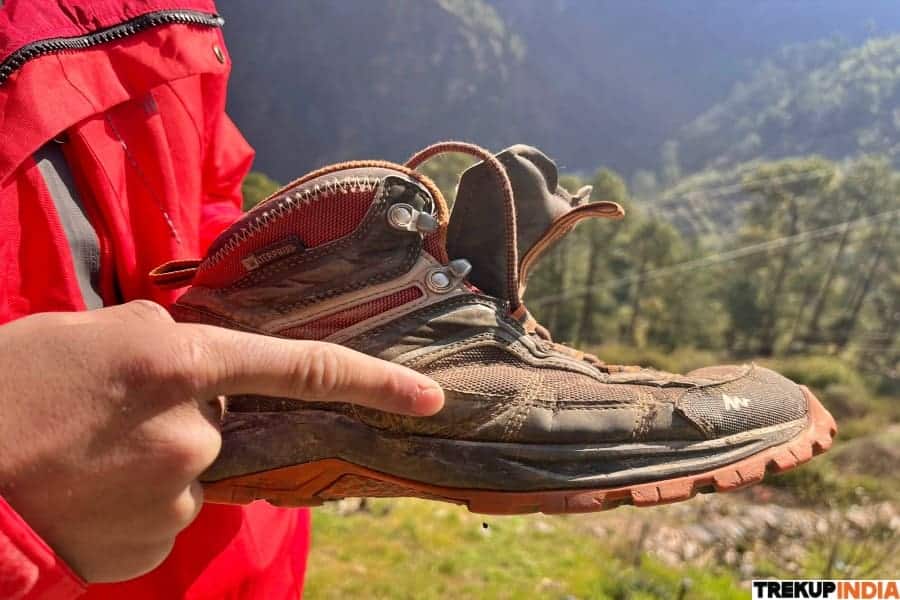
The upper layer of hiking shoes is one of the most crucial components that contribute to both comfort and performance. This outer layer protects your feet from the elements while allowing air circulation to keep your feet dry and comfortable even in harsh conditions. The upper is especially important because it helps regulate moisture inside the shoe, keeping your feet comfortable over long distances and various terrains.
While natural leather offers resistance to water, it tends to degrade quickly when exposed to moisture, snow, or rain. For a more durable and water-resistant option, hiking boots are often equipped with a waterproof membrane, which ensures that water stays out while still allowing your feet to breathe. This feature is crucial for keeping your feet dry in wet conditions.
A waterproof hiking boot typically features a membrane made from materials like Gore-Tex, Nova Dry, or Sympatex. These membranes are designed to be air-tight, preventing water from entering the shoe while also offering breathability to manage moisture inside. The inside of the boot is equipped with a water-resistant layer that helps ensure your feet remain dry in any weather conditions, protecting against moisture buildup and uncomfortable dampness.
When selecting hiking boots, it’s important to look for those with breathable materials, as this will improve airflow and prevent excess sweat and heat buildup. Hiking boots that use high-quality water-resistant coatings or membranes like Gore-Tex or Sympatex offer the perfect balance of waterproofing and breathability.
My Recommendation:
Based on the detailed factors mentioned for selecting the best trekking shoes for all terrains, I recommend considering boots from Quechua and Salomon. These brands offer durable, comfortable, and water-resistant footwear that can handle various conditions. Their price range is between ₹2,500 to ₹8,500, making them accessible and reliable options for trekkers.
You can find Quechua shoes at Decathlon, which has stores across the country. If there is no Decathlon store near you, you can also purchase them online from the Decathlon website, which offers delivery services for those located in areas without physical stores.
About Author

Preetam Singh Rawat (Founder)
The person behind this trekking organization is someone who’s spent over a decade – 12 years, to be exact – living and breathing the mountains. With multiple high altitude summits under his belt (we’re talking 6000 to 7000 meter peaks), he’s not just experienced – he’s the real deal.
But what really sets him apart is the sheer number of treks he has guided. He has led over 200 Himalayan expeditions, including well known routes like Bali Pass, Buran Ghati, Rupin Pass, Pin Bhabha, Stok Kangri, and Black Peak. Not just once, but multiple times. So yeah, when it comes to the Himalayas, he knows every twist in the trail and every story the mountains have to tell.
Got questions or want to get in touch? Write to Preetam at preetam@trekupindia.com. He’s always happy to chat about treks, answer your questions, or help you prepare for your next big adventure.
Share this article
Dates For Upcoming Treks
Want To Trek Like Pro?
Basically, watch these videos if you want to trek the same way professional trekkers do and make your skills better. These videos contain useful tips and techniques to further improve your trekking skills itself. These videos actually help both new and experienced trekkers improve their trekking skills. These videos definitely provide useful tips that make your trek better. We are seeing that these videos by Trekup India experts will only help you make your trekking skills better.

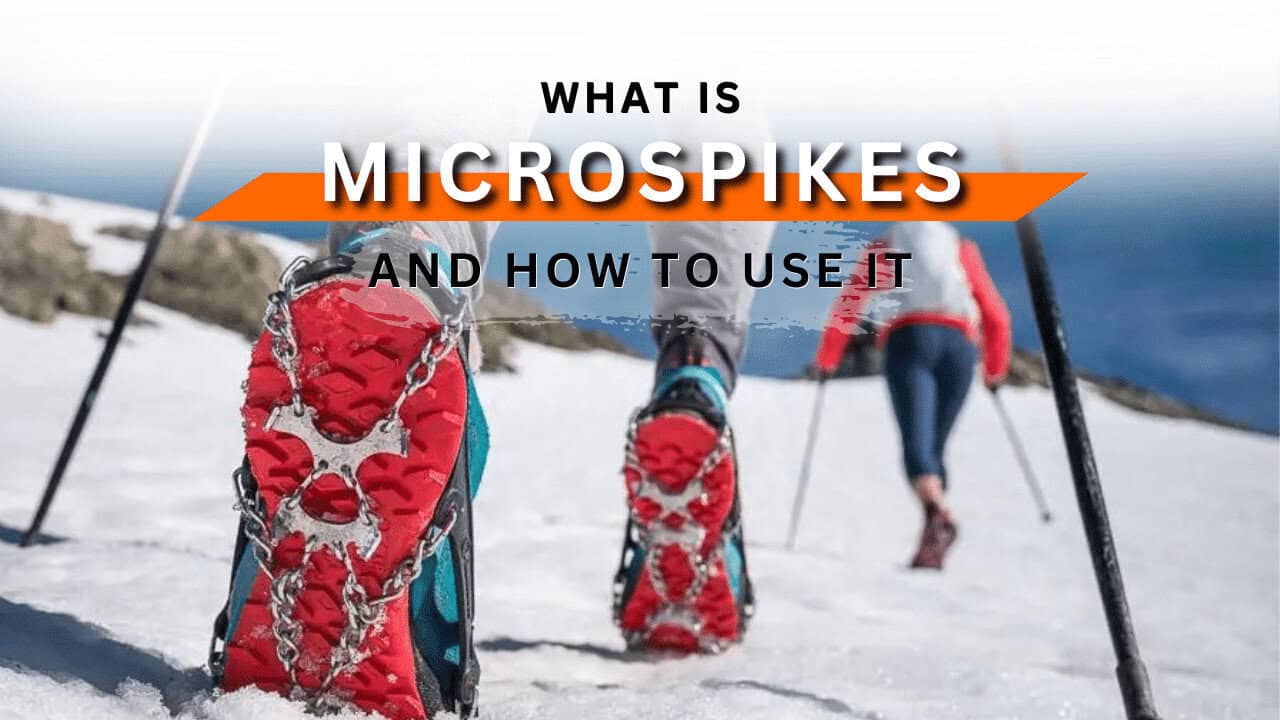

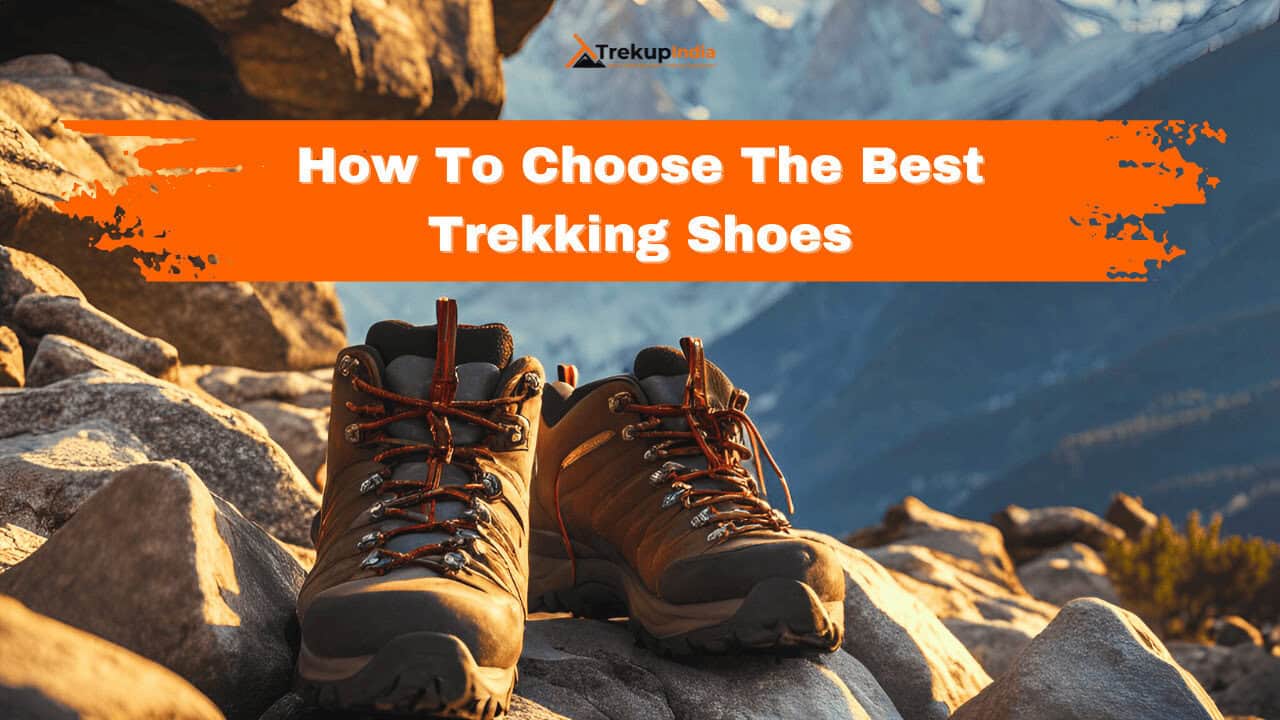
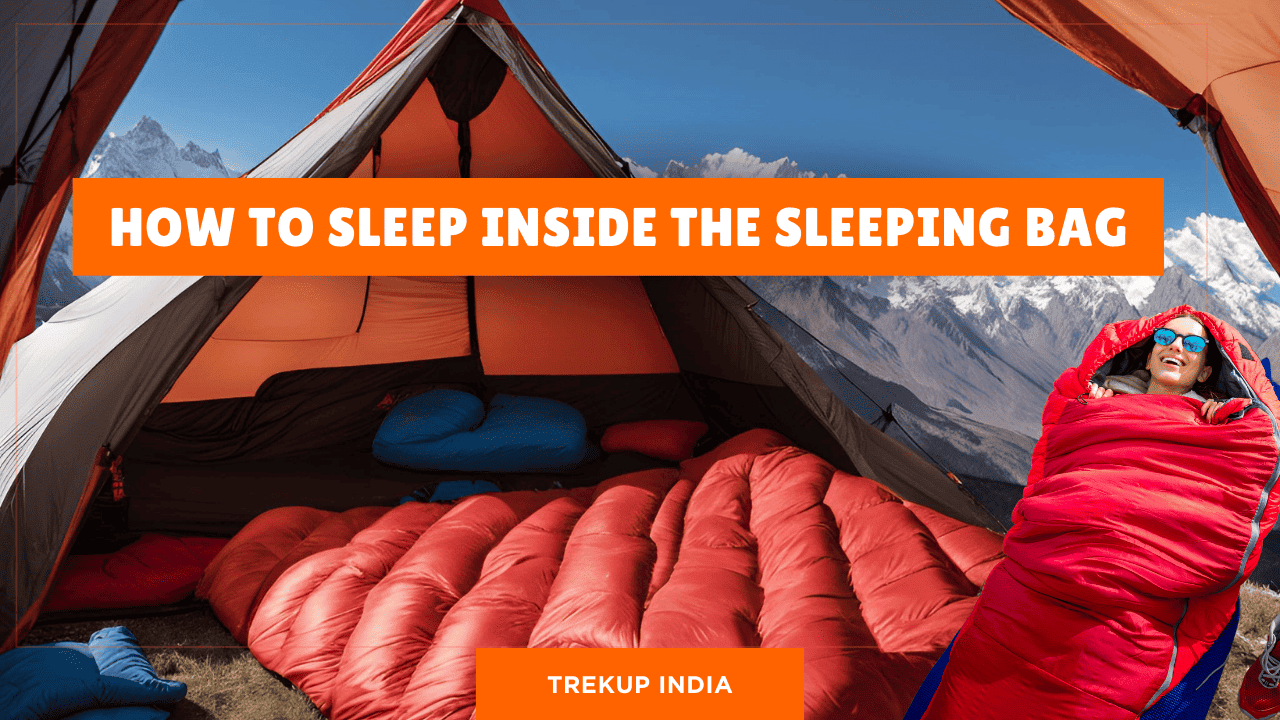
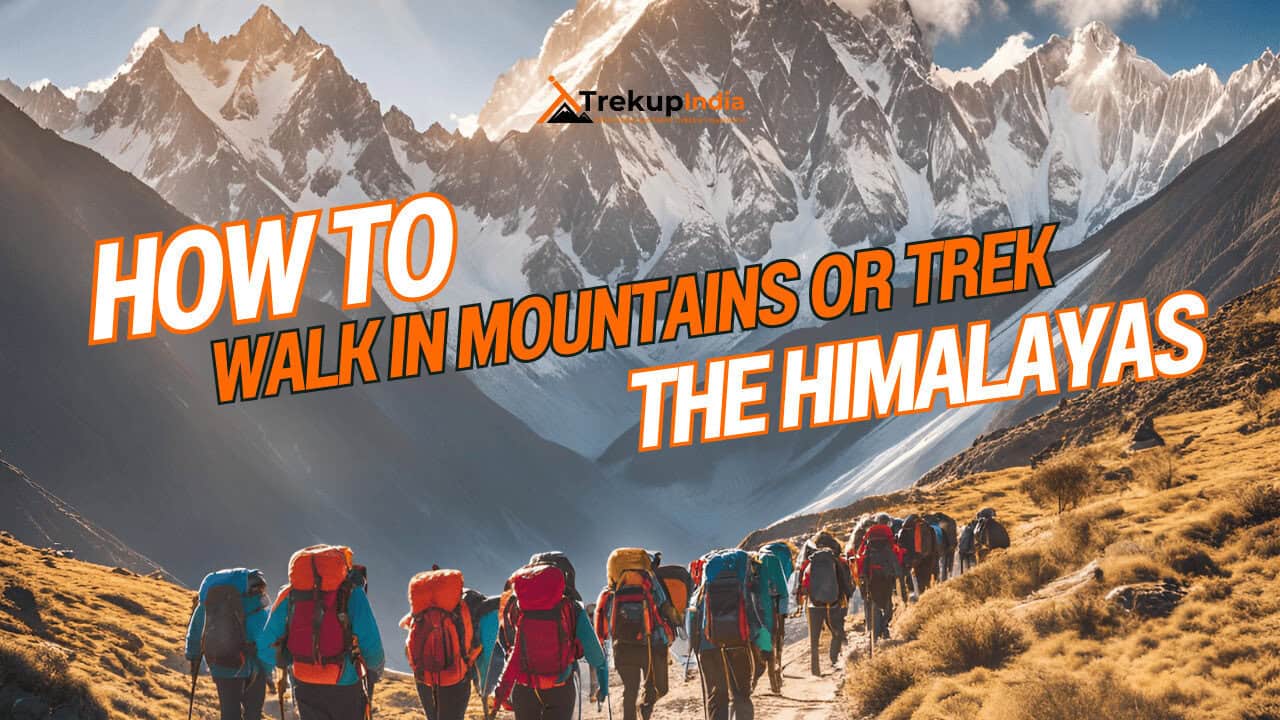
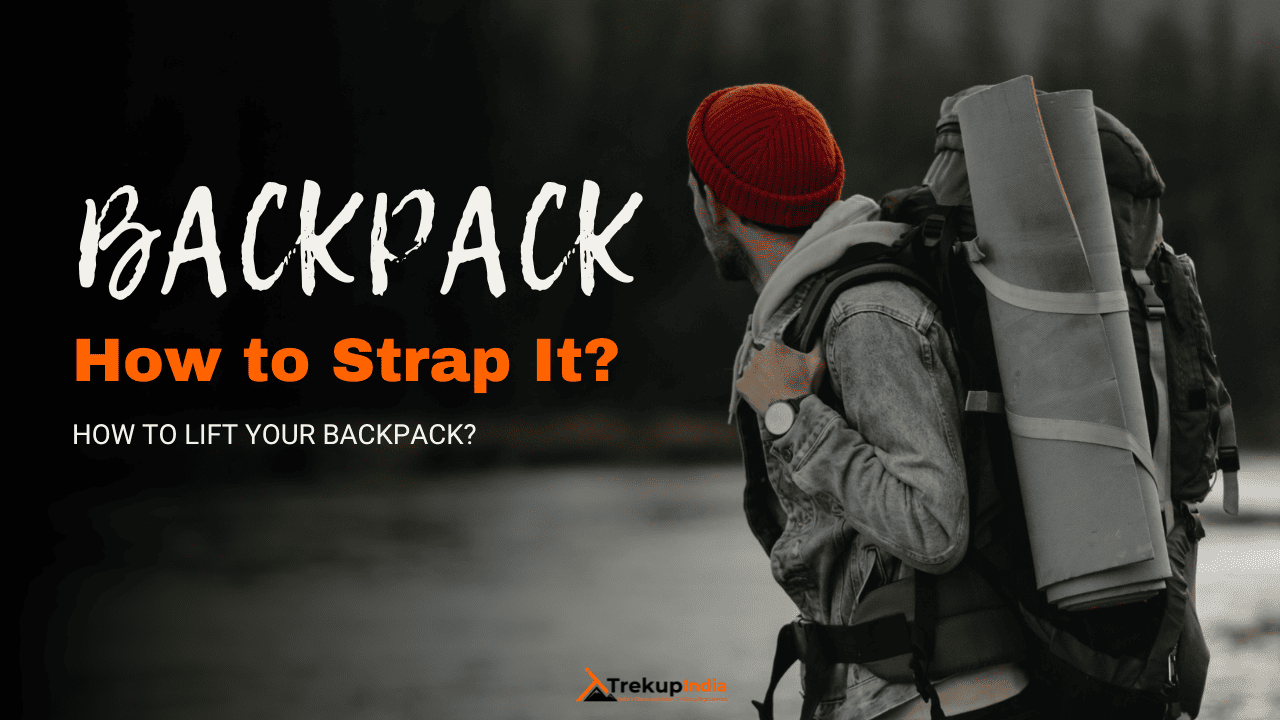
Know Everything About Acute Mountain Sickness
Acute Mountain Sickness occurs when people trek to high altitudes above 8,000 feet. This condition itself develops further due to reduced oxygen levels at such heights. Basically, as you go higher up, the air pressure and oxygen levels decrease, which causes the same problem. Acute Mountain Sickness surely causes headache, nausea, vomiting, and dizziness in affected persons. Moreover, peoples also experience difficulty in sleeping during this condition. To avoid mountain sickness, you should actually trek up slowly to higher altitudes. To learn further about this condition itself, watch the videos by Trekup India.


